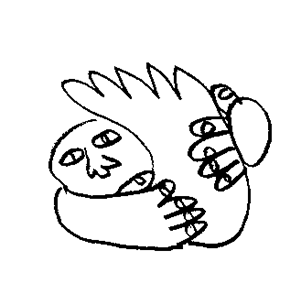about
my practice is a subversive, auto-ethnographic exploration into the balkan masculine experience as seen through masks and alter egos.
i am drawn to the archetype of the incel and the fool as i explore how masculinity is being shifted by ideology. also using masks and carnival imagery as a tool for imagining patterns of perceiving and understanding oneself beyond binaries.
i start from (pre- & post-) ottoman balkan history, culture and traditions as evidence for speculative and sustainable modes of post-ideological existing.
i work with different media, varying from drawing to painting and from video to performance; each of them acts as a visual statement, allowing for each technique to accomplish a different goal.
– – – – –
along with that, i am part of apartament 6, an artist collective whose focus is on creating critical and reflective art regarding the current living conditions of young emerging artists from romania.
inspired by the imagery and tradition of living room exhibitions done by subversive artists of the communist times, we aim to better understand the artistic, political and social potential of the personal living space – the apartment. (ro: apartament)
– – – – –
contact:
email: [email protected]
instagram: @radutheguy
also as _câine on:
bandcamp, spotify, soundcloud, apple music
– – – – –
– end of transmission –
visions of the balkan man
with these selected works, i aim to get a better understanding of the imagery, performativity, and creation of the balkan masculine, through an extensive multi-media approach;
– – – ( main series ) – – –
~ five characters try to make sense of the world around them and of themselves, each a vector of stereotypicality ~
[ – – – season ii – – – ]
untitled (ritual i) – 2025
a video work whose protagonist is a (new year’s) goat lost in a kind of backroom. the work was filmed in an anti-squat building that until recently served as the main headquarters of the dutch postal service in the hague.
untitled (bathroom i) – 2024
a work done originally for the ap.6 group show in 2024 for an exhibition centred on the themes of nostalgia linked to the properties of personal space. each exhibiting artist chose a room as a starting point for their work.
the bathroom for me represents a place of vulnerability where, according to freud, the human being is reminded of their animalistic origins through the various (shameful) acts associated with it.
the text goes off at a purposefully fast pace as the video was part of a bigger multimedia installation that asked the visitor to spend extra time inside the fictitious bathroom in an attempt to destigmatize the shame and to appreciate the vulnerability present in such a setting.
[ – – – season i – – – ]
untitled (culture) – 2023
~ if the gimp represented the current trends, the goat history, and the shapeshifter patriarchal force, then all three of them combined would be the force that pushes men forward: something akin to a culture. when that culture is perpetually changing, shifting, going back and forth in time, how would one make sense of that culture? should one even try? ~
– – – – –
this is where i am now, in the mixing pot of what people colloquially call “culture” – an ever shifting mass of concepts that pushes me forward: telling me what to wear, which accent to use, where i should spend my free time and how to talk to a girl.
untitled (man) – 2023
~ if the gimp represented the present, then the goat would be the past. so how did the gimp feel about the past? from what i could gather, it was not a pretty relationship. ~
i always found it so difficult to embrace what i was told my identity represents. the current portrayal from both the outside and the local felt like a gross caricature – while the historical, ancestral, too high of an ideal to reach.
untitled (death) – 2023
~ if the gimp represented the masculine, then the mannequin was somewhat the feminine. their closeness was so alluring, yet so secretive. they seemed totally opposed, yet so intertwined. what bound them together? ~
sometimes, trying to be the typical, somewhat toxic man was so fun, it felt like a high. even more peculiarly, it felt like other people loved and encouraged the toxicity. was there a way to play that character in a way i felt fully comfortable with?
untitled (tv) – 2023
growing up, it seemed like all of the strong people, like politicians, loved culture and loved my country. but their idea of strength was destructive, and i was addicted.
– end of transmission –
untitled (conflict) – 2023
~ it seemed that the gimp-mask had a deep hatred for the others, especially for the mannequin and the unicorn. in the absence of real power in the streets, he would try to impose his dominance over the other four. for what reason, i did not know. perhaps he saw himself as the necessary evil of this group? ~
realizing that as a man, i could not assert my dominance over anything, made me self-destructive. with every punch i would get from someone else, i would punch myself twice.
untitled (fiat) – 2023
~ although the gimp-mask’s speech was the one i understood the most, he was a complete enigma. the first story he ever told me was already from the time he left the country. but i wanted to know more details of his life before that. at first, he would only talk about the usuals: cars, drinks, family, the streets and so on. i sighed in frustration, but i then realised: the cars, they were all broken; the drinks, all drunk out of desperation; the family, all turned to faint memories; the streets, haunting traumas of the past. ~
under the surface of this masculine performance, the cracks were hidden almost in plain sight. i was a victim of my past, everything i did was following life’s arbitrary order – or fiat, if you will.
untitled (apartment) – 2022
~ the mannequin, the gimp and the unicorn opened up more about their common past. they talked about a space they used to share, one that was very dear to them. somewhere where they felt free, unchained from the expectations of the outside world. but something happened, and that place turned from architecture to memory. i got the feeling that from that point onwards, their lives changed forever. ~
i remember how, from a young age, i yearned for a safe space i thought i never had. only now do i realise how blind i was.
untitled (the street) – 2022
~ to my surprise, the gimp and the demon had history. it seemed that at one point in the past, the gimp was searching for the demon in hopes of taming it and harnessing its power. but with one simple touch, the gimp would find out how wrong he was. forever tainted by madness, it now made sense to me why the gimp revelled in chaos and violence. ~
i foolishly thought that by imitating the brute masculinity i saw in others i could perhaps one day be a full man too. but what ended up happening is that i assimilated only the superficial and the self-destructive.
untitled (my boy) – 2022
~ from the start, it seemed as if the mannequin, the unicorn and the gimp had a strong bond with each other. even more than that, the mannequin and the gimp seemed to share a common locality, the basement. from the way they talked about each other, it felt as if these two were almost related. they also had a complicated relationship with the unicorn-head. ~
as i was grappling with my masculinity, i looked back at my childhood. i imagined myself sitting on the shore of a lake with my child self. what would make young me happy? how could i help him grow? could i be my own father figure?
– – – ( soundscapes ) – – –
~ combining harsh noise with the eastern tunes and beats of the balkan world to explore the feelings that cultural dysphoria can generate ~
_dintr-un mix 4 – 2025
_dintr-un mix 3 – 2025
_dintr-un mix 2 – 2025
_dintr-un mix 1 – 2025
socoteală/ beneden LP – 2024
_din diasporă EP – 2024
_din televizor EP – 2023
cei șapte ani de acasă LP – 2023
_din canal EP – 2022
– – – ( paintings ) – – –
~ color and texture give form to otherwise invisible emotions, atmospheres and other states of mind ~
(nude) male study series – 2024 / 2025
– click/ tap on the images for full size –

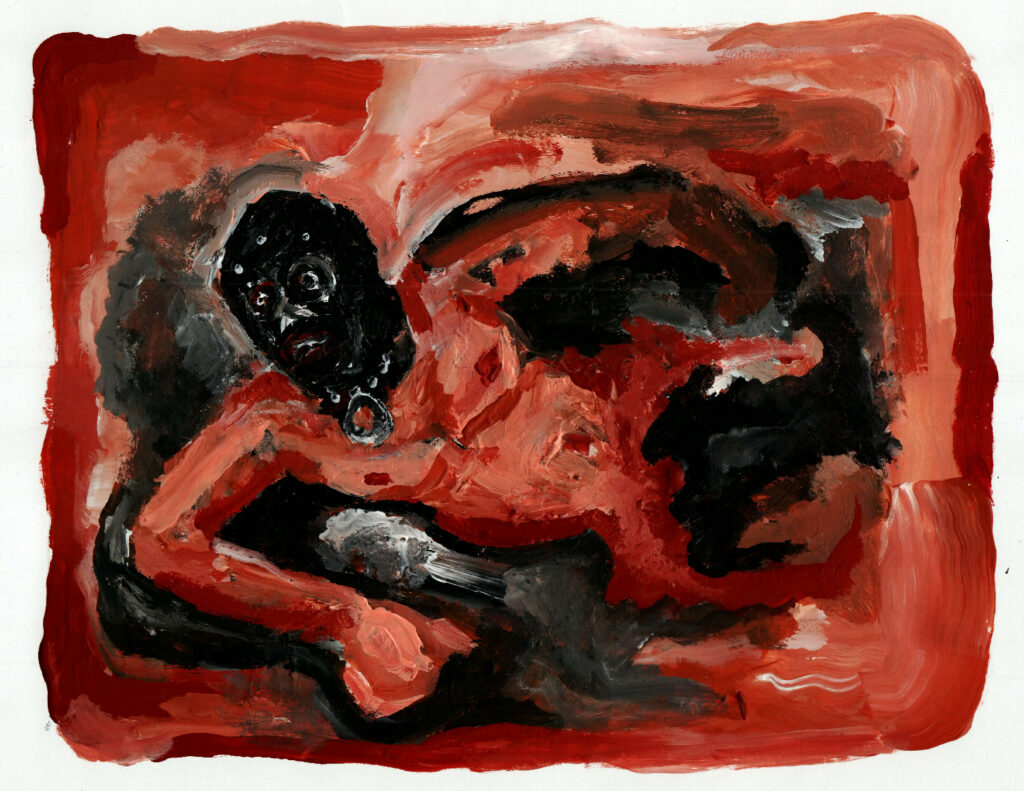
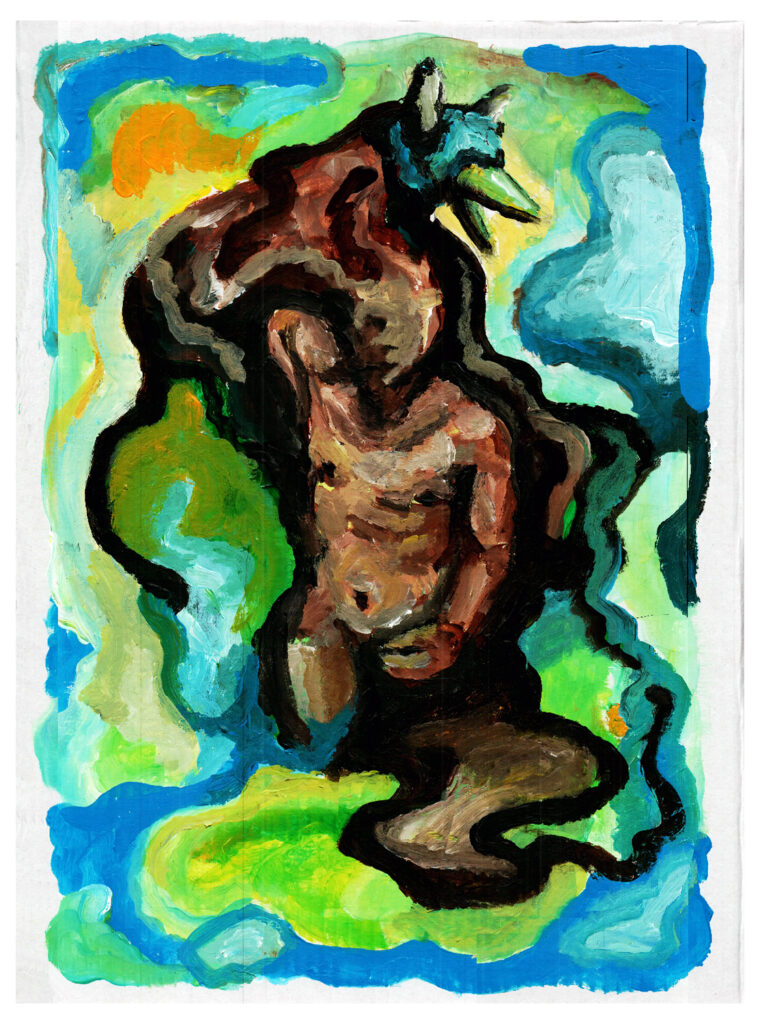
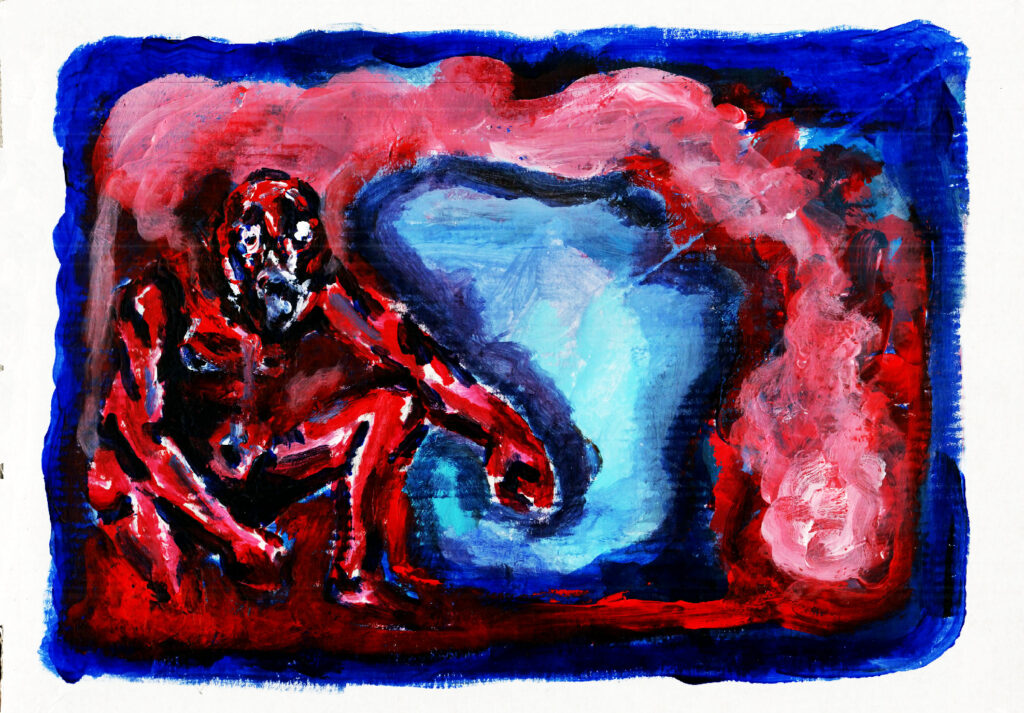
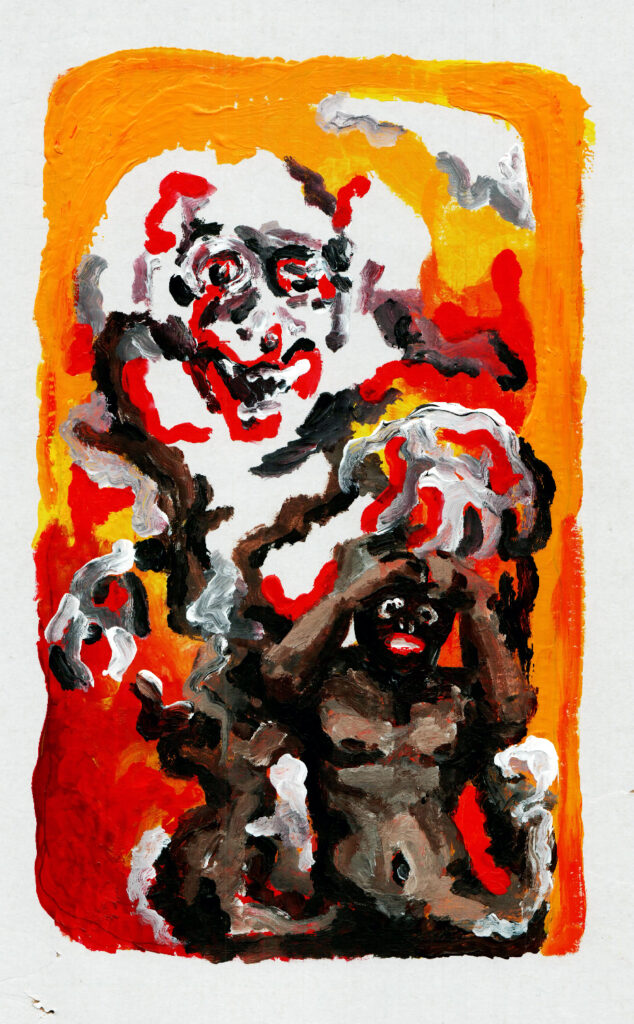
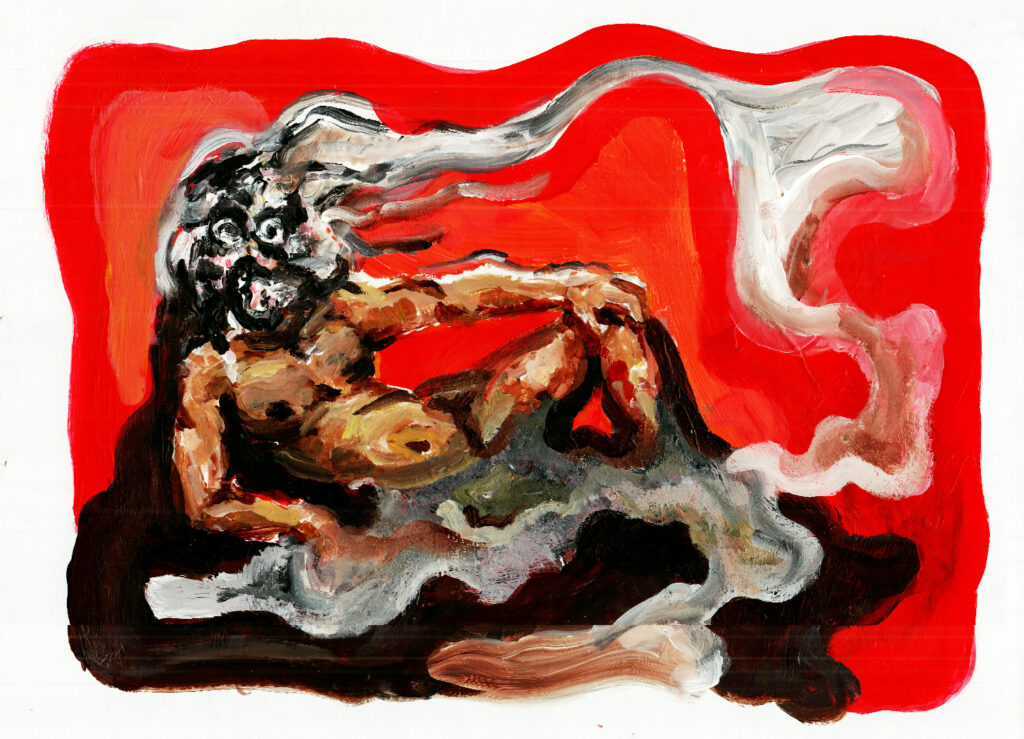
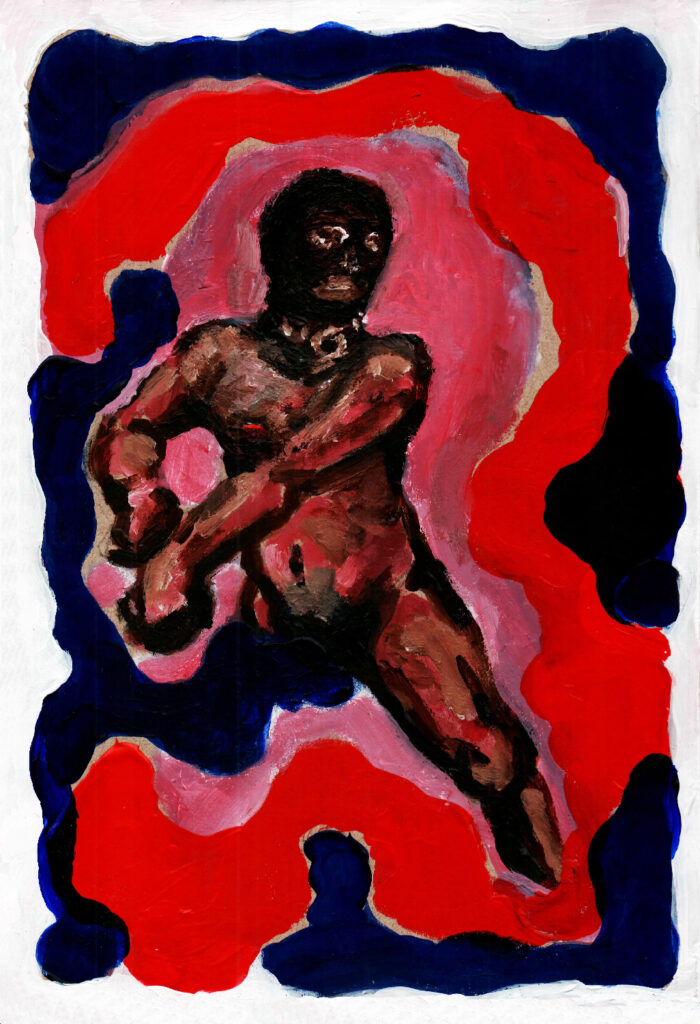
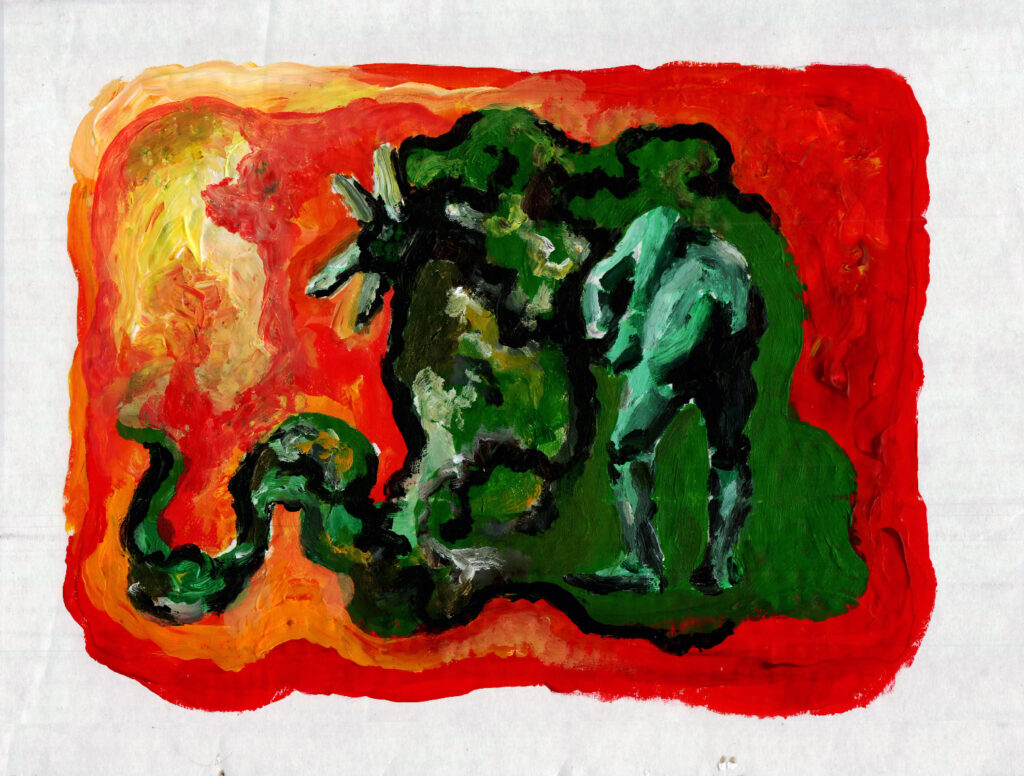
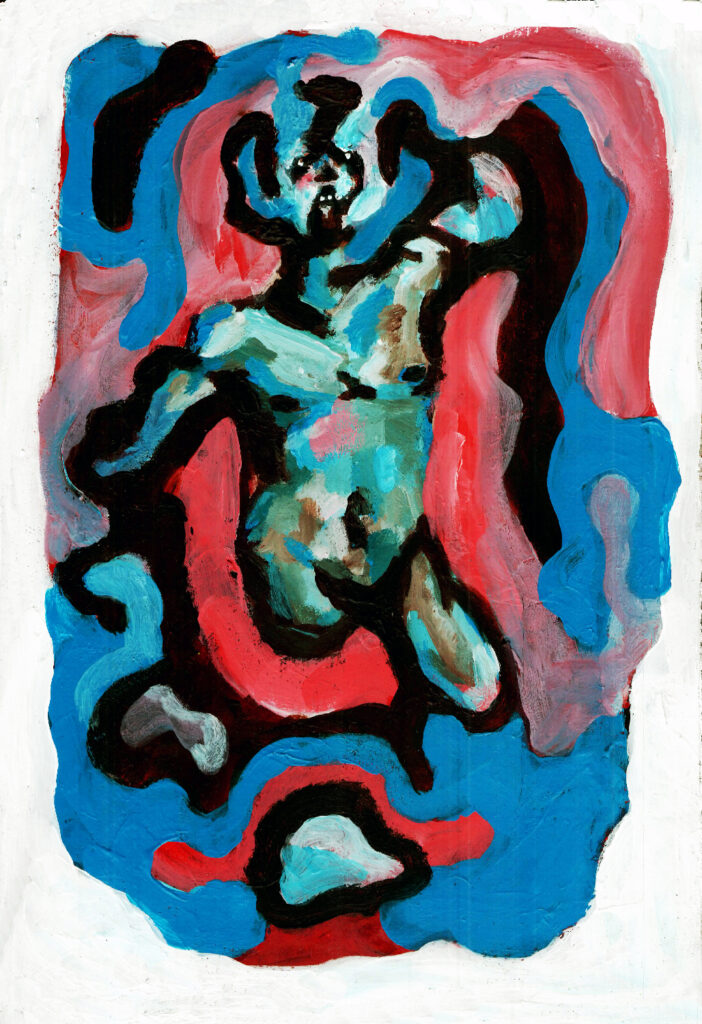
(self) portrait series – 2021 / 2024
– click/ tap on the images for full size –
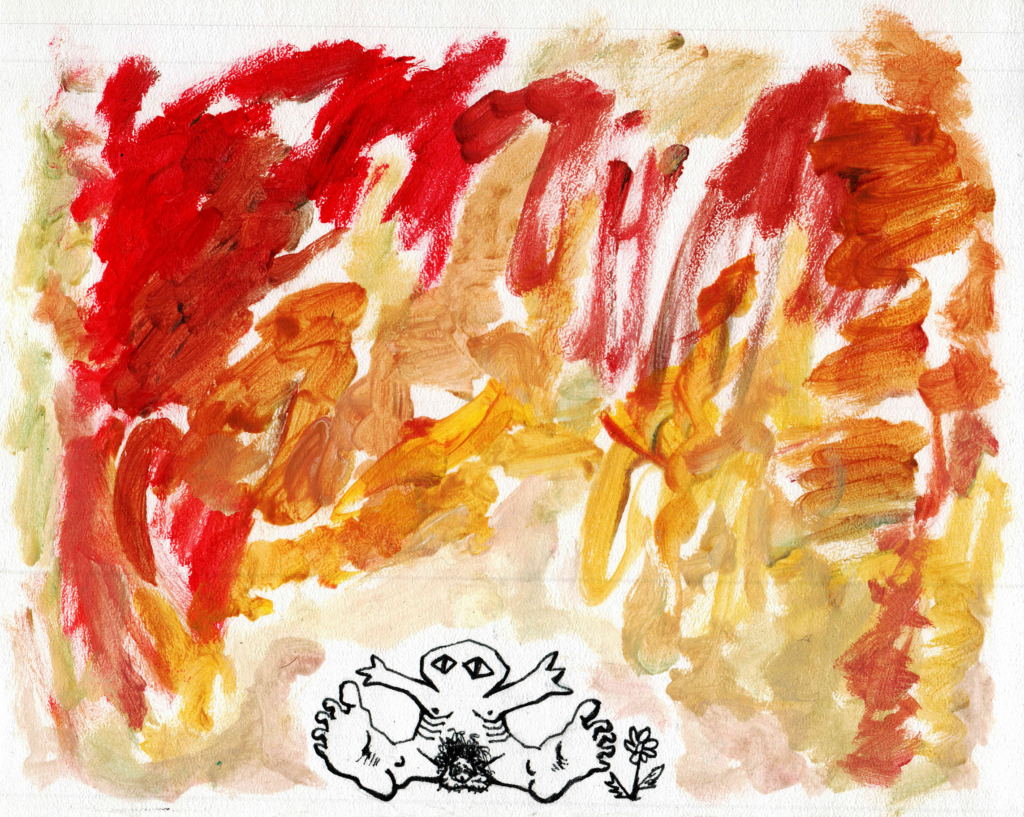
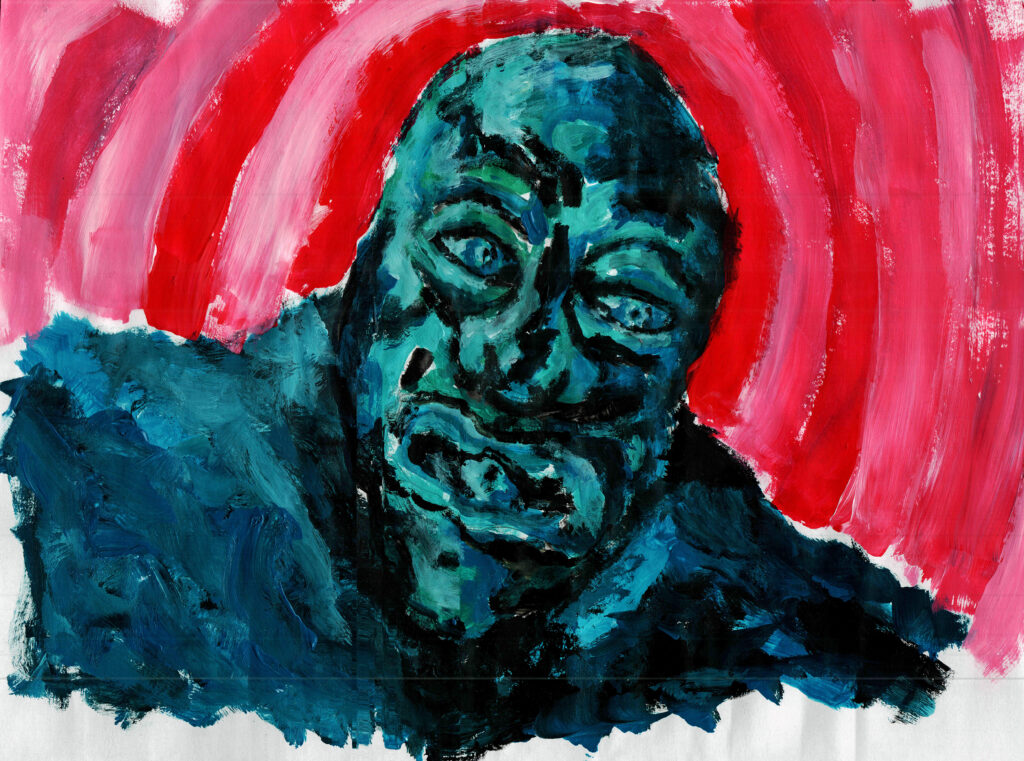
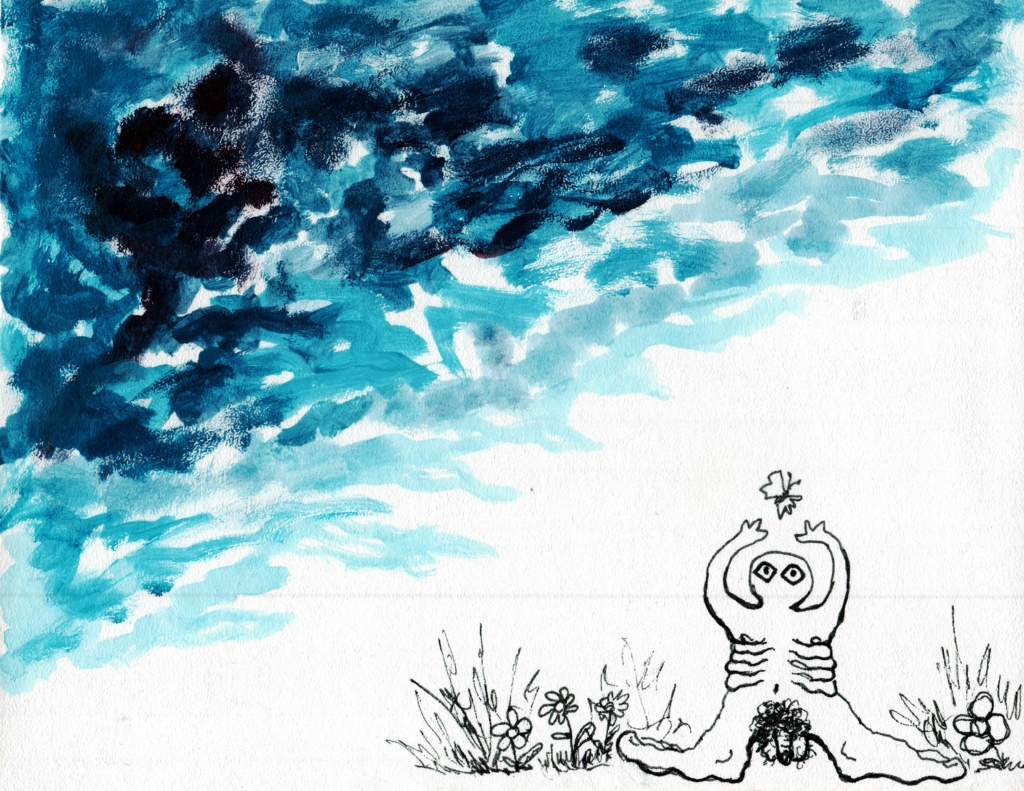
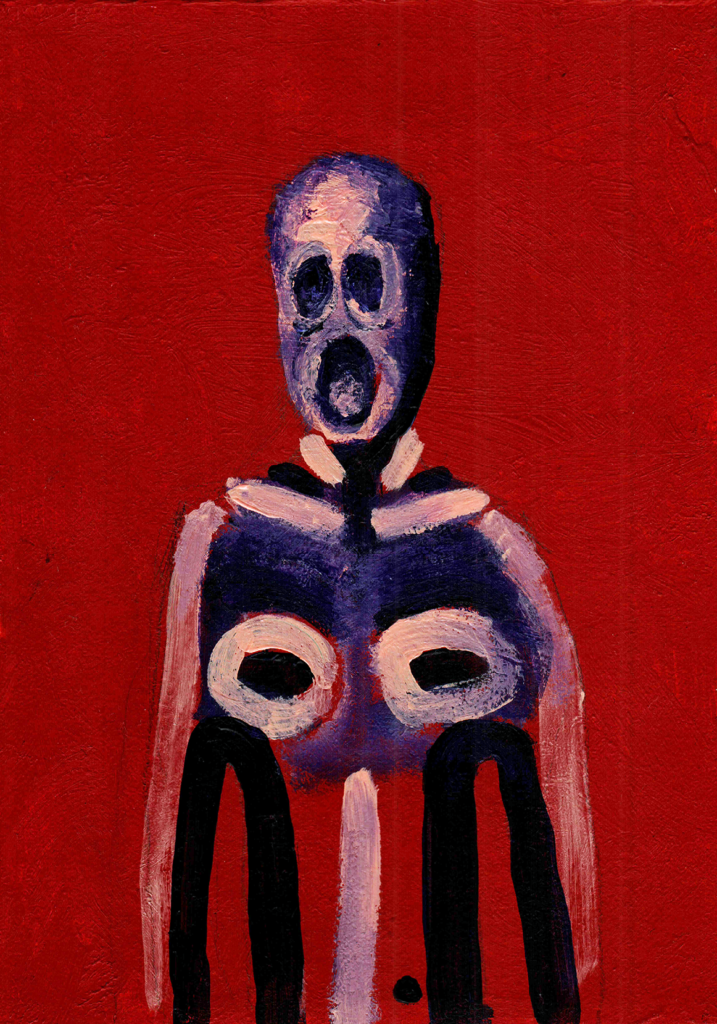
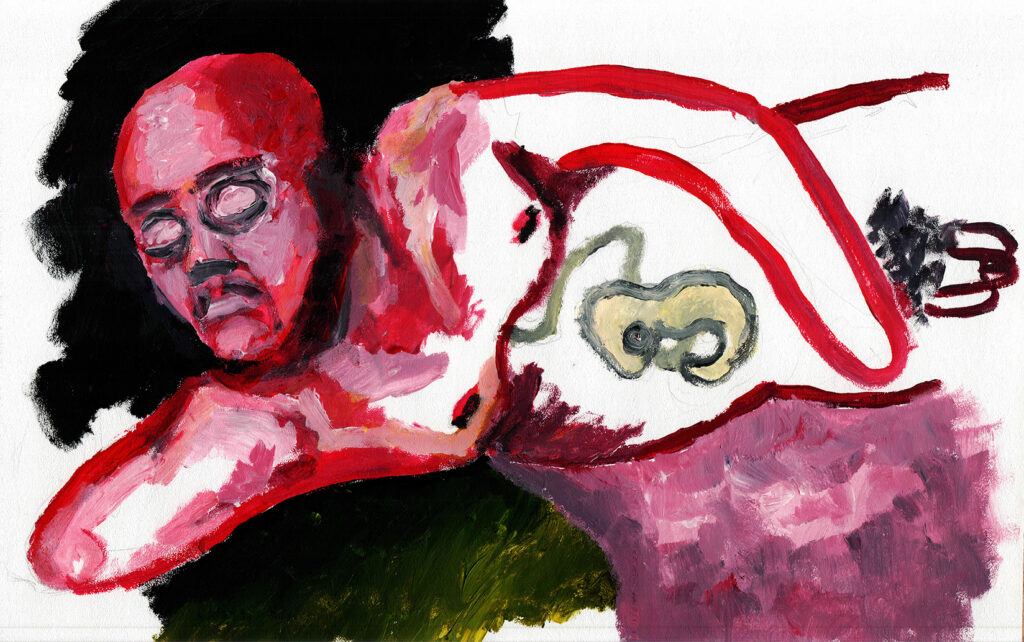
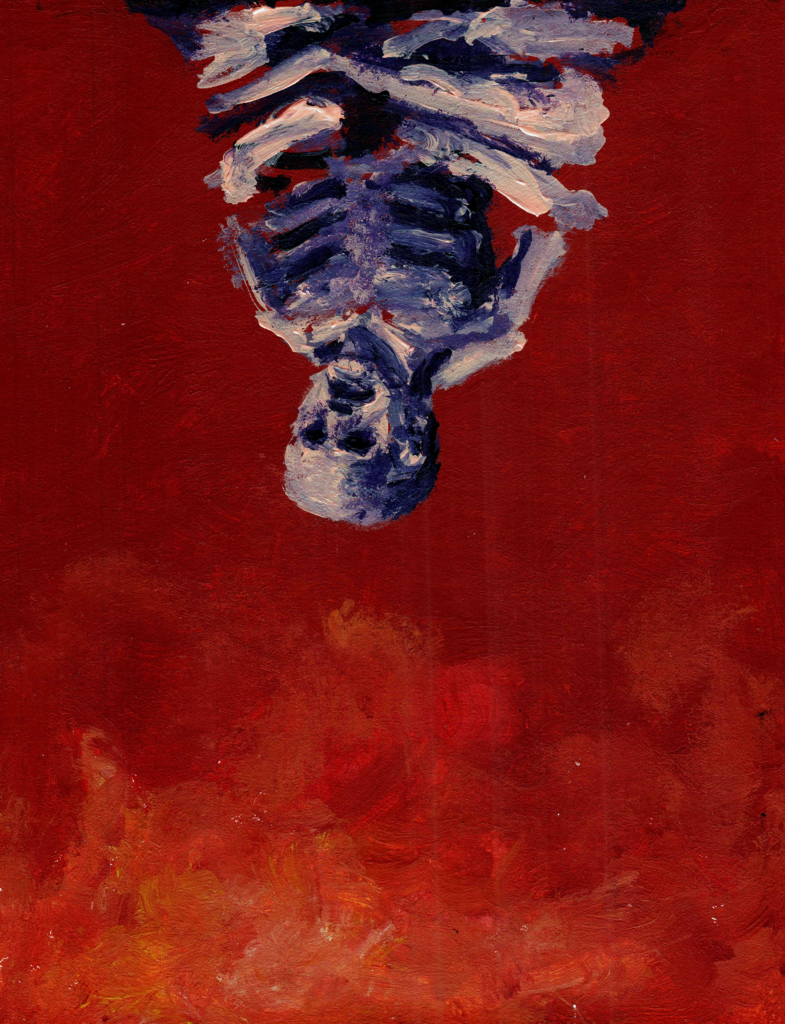
(pre) histories series – 2021 / 2024
– click/ tap on the images for full size –


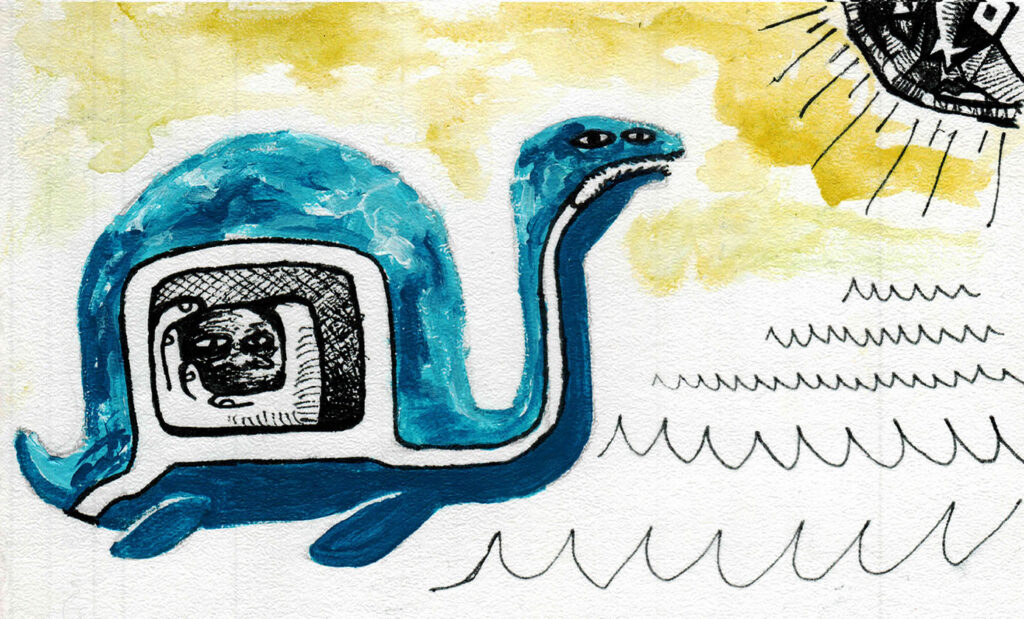
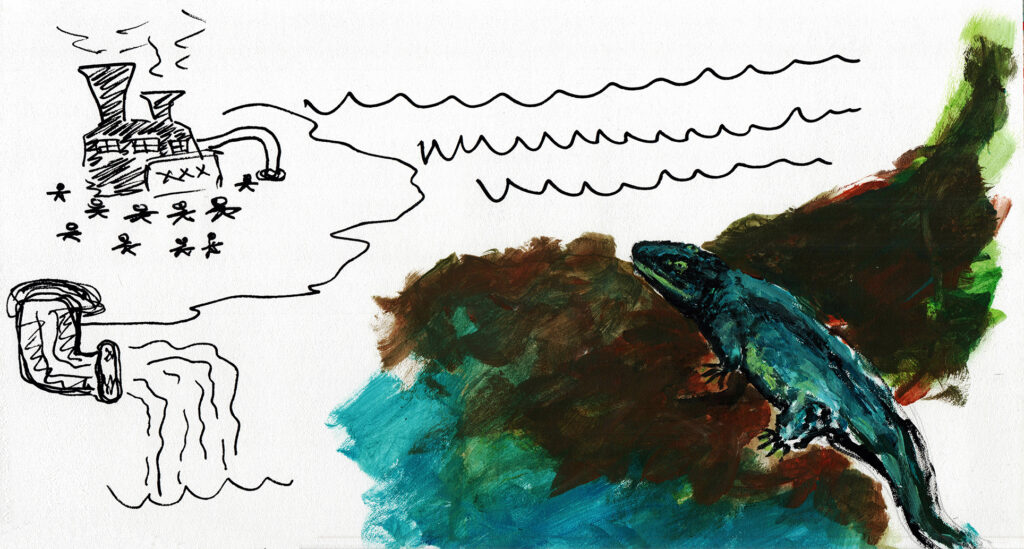
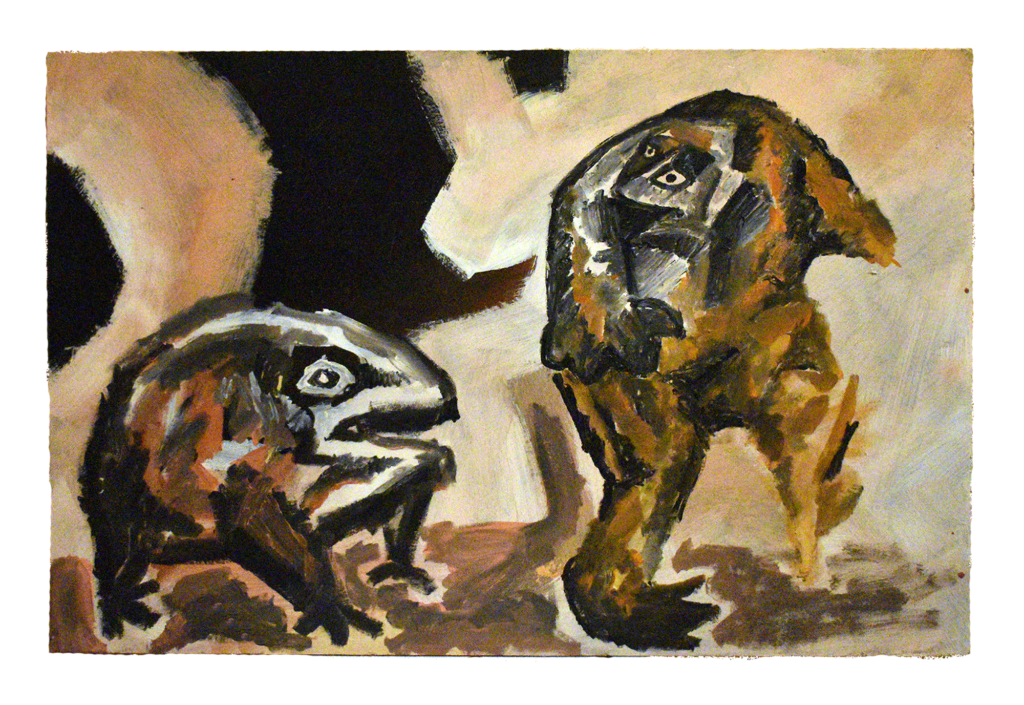
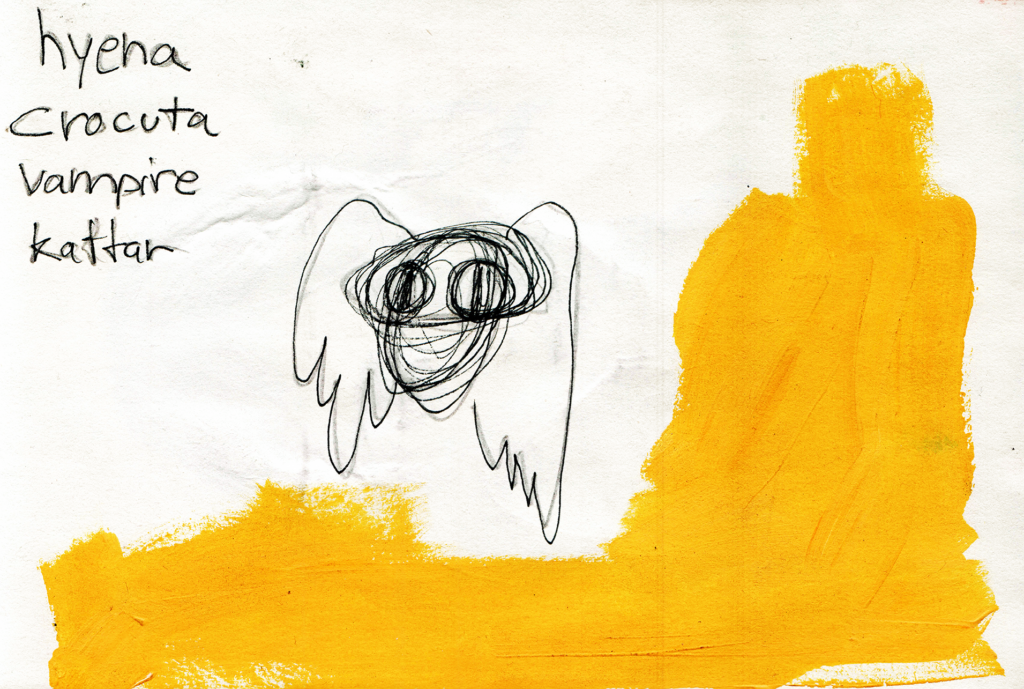
(good) boys series – 2022
– click/ tap on the images for full size –
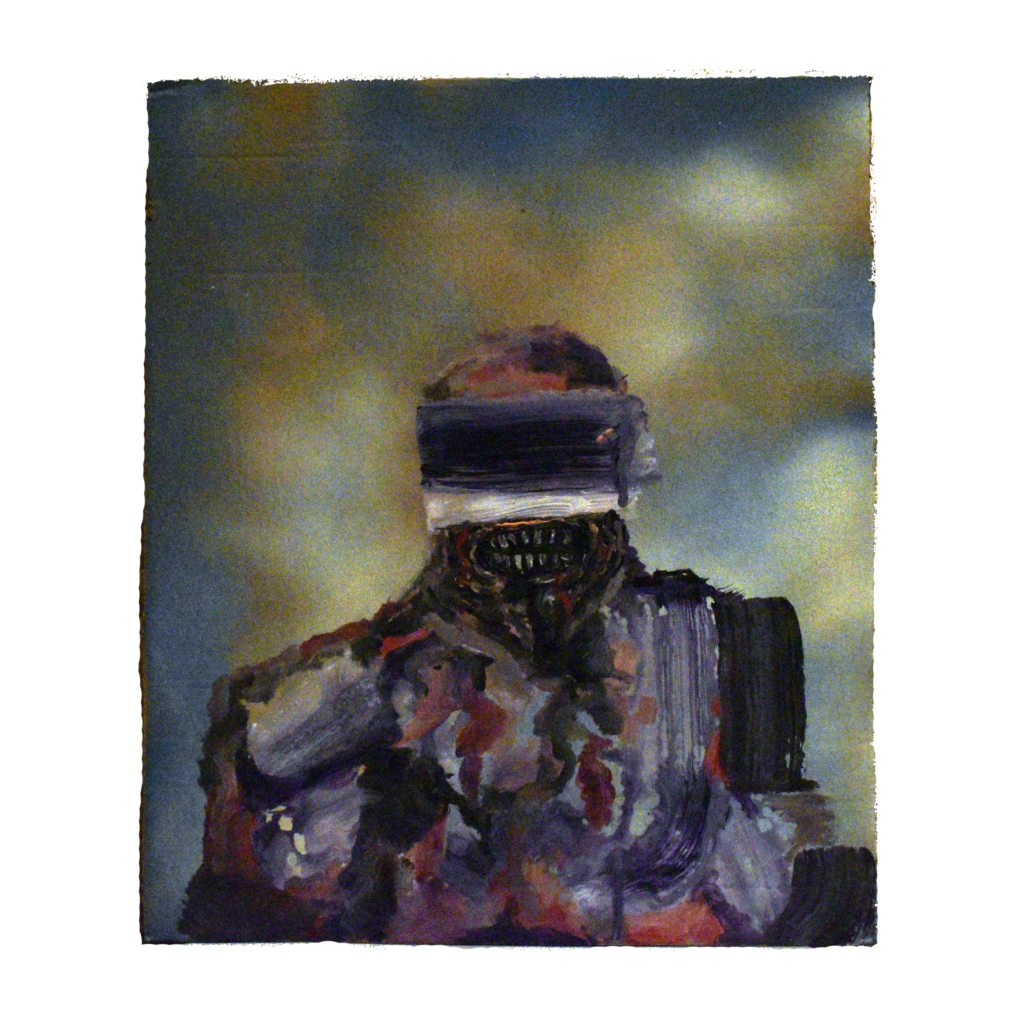
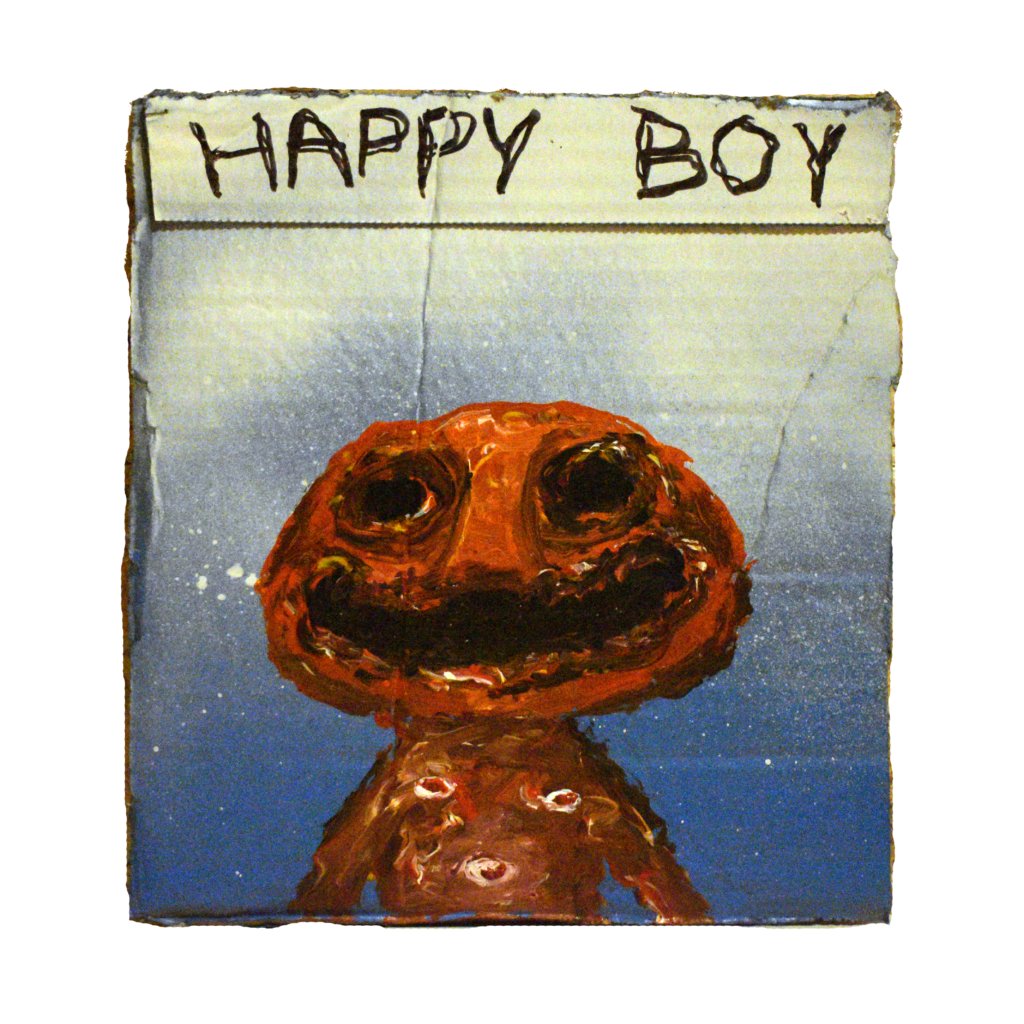
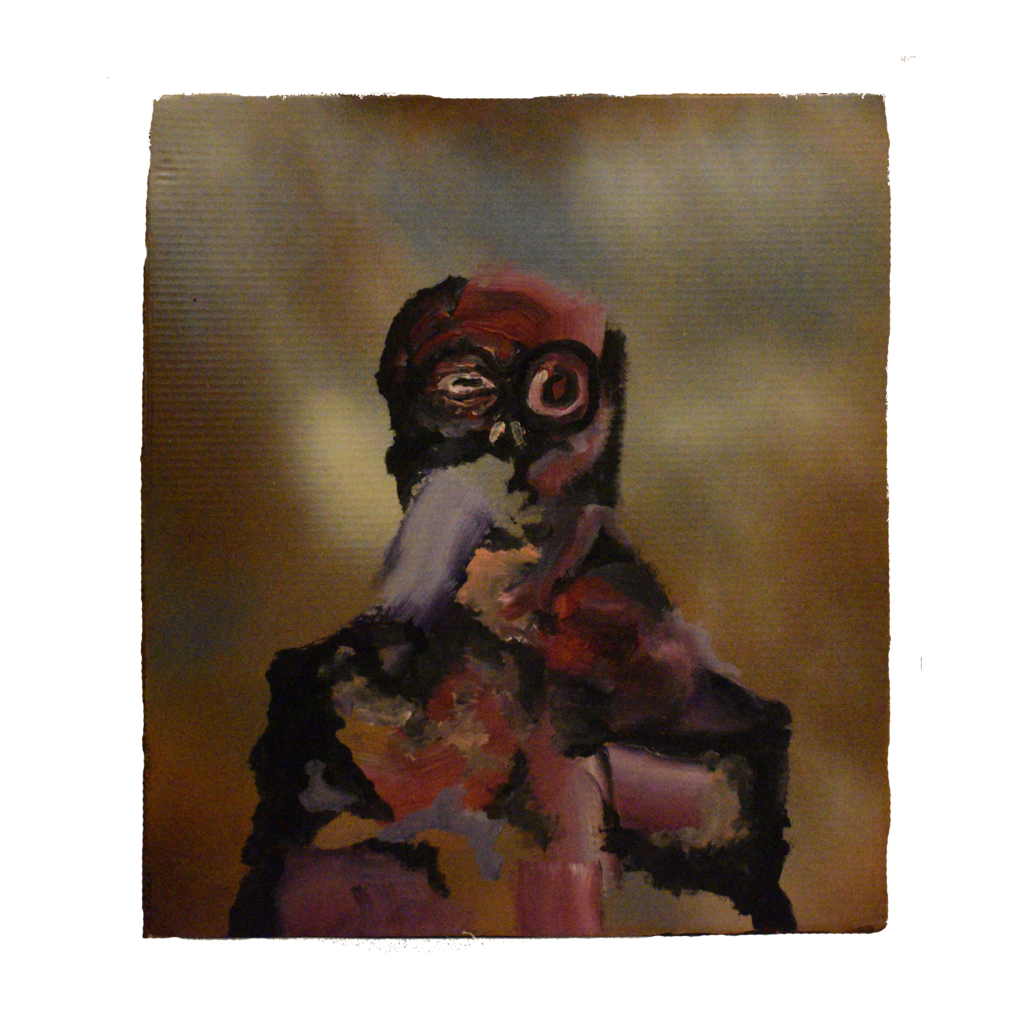
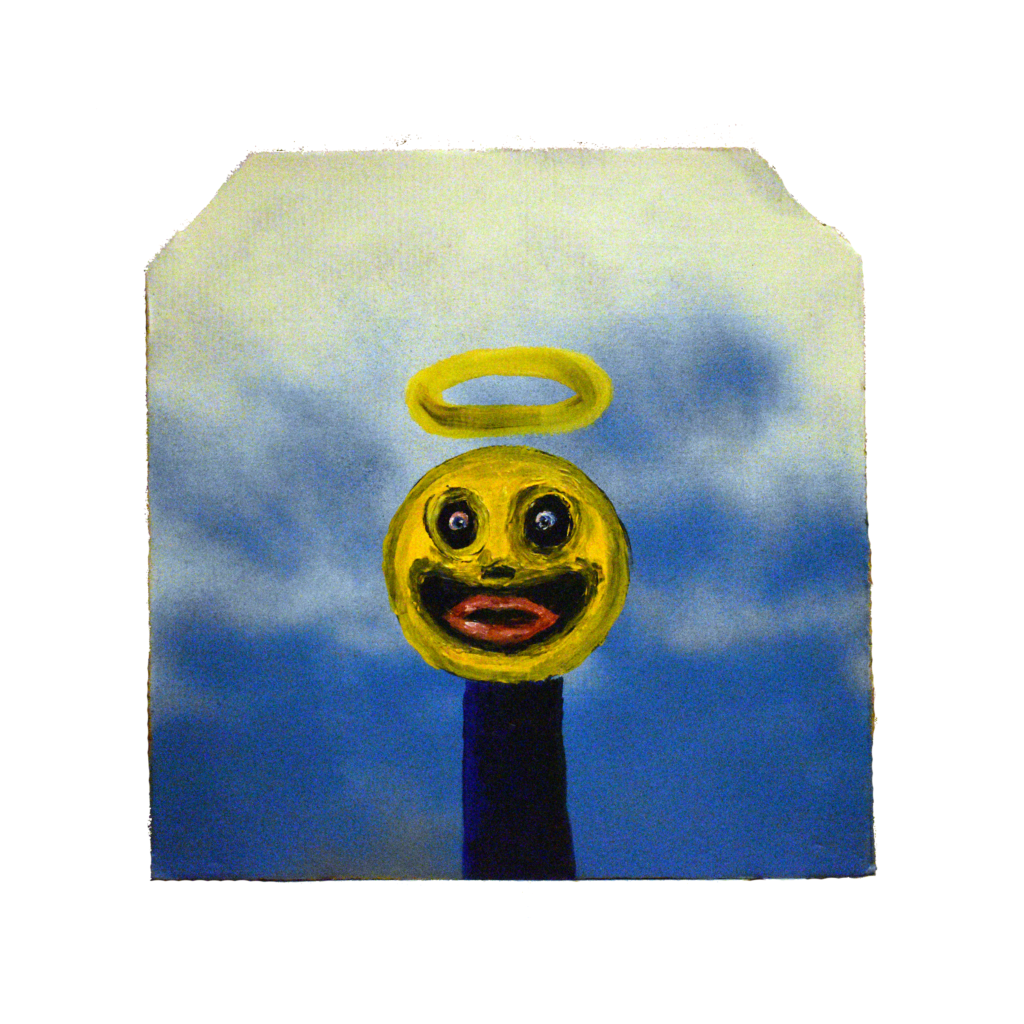
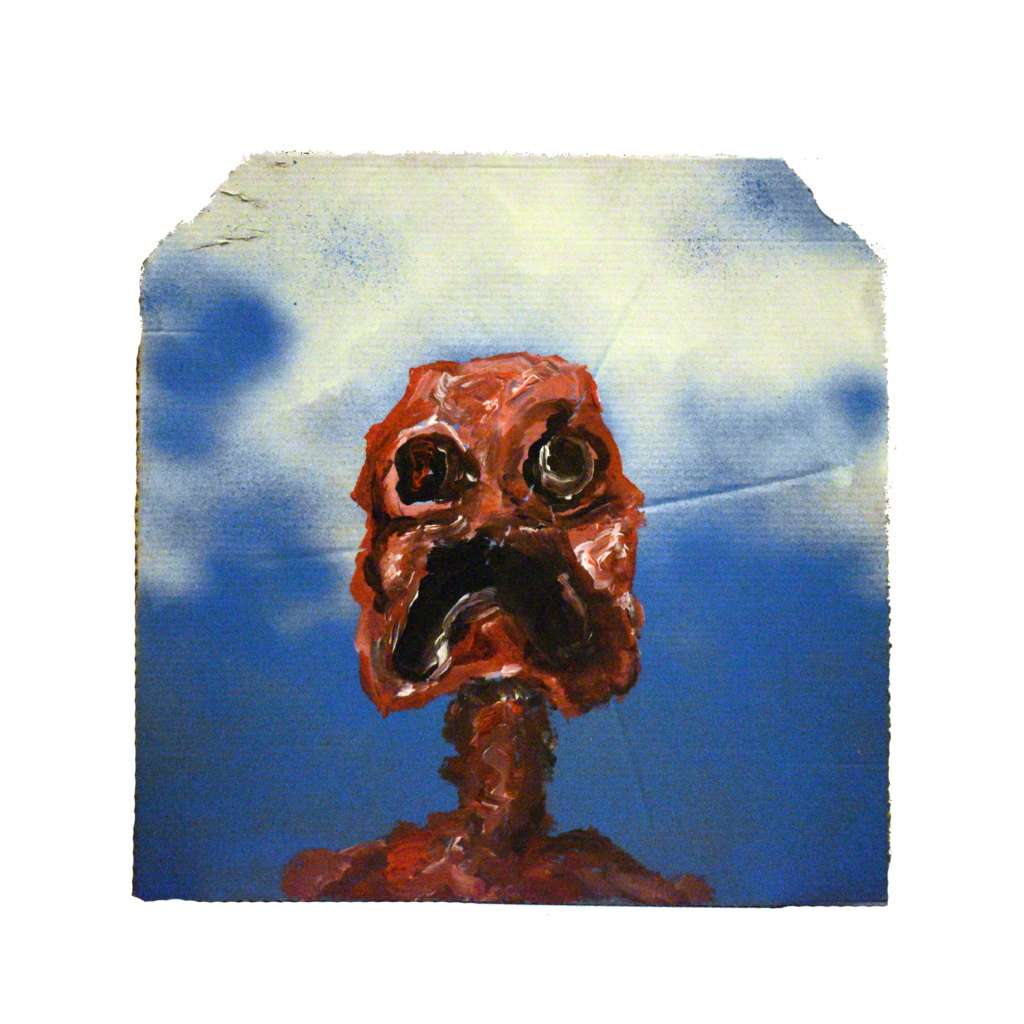

(corrupted) love story series – 2020
– click/ tap on the images for full size –
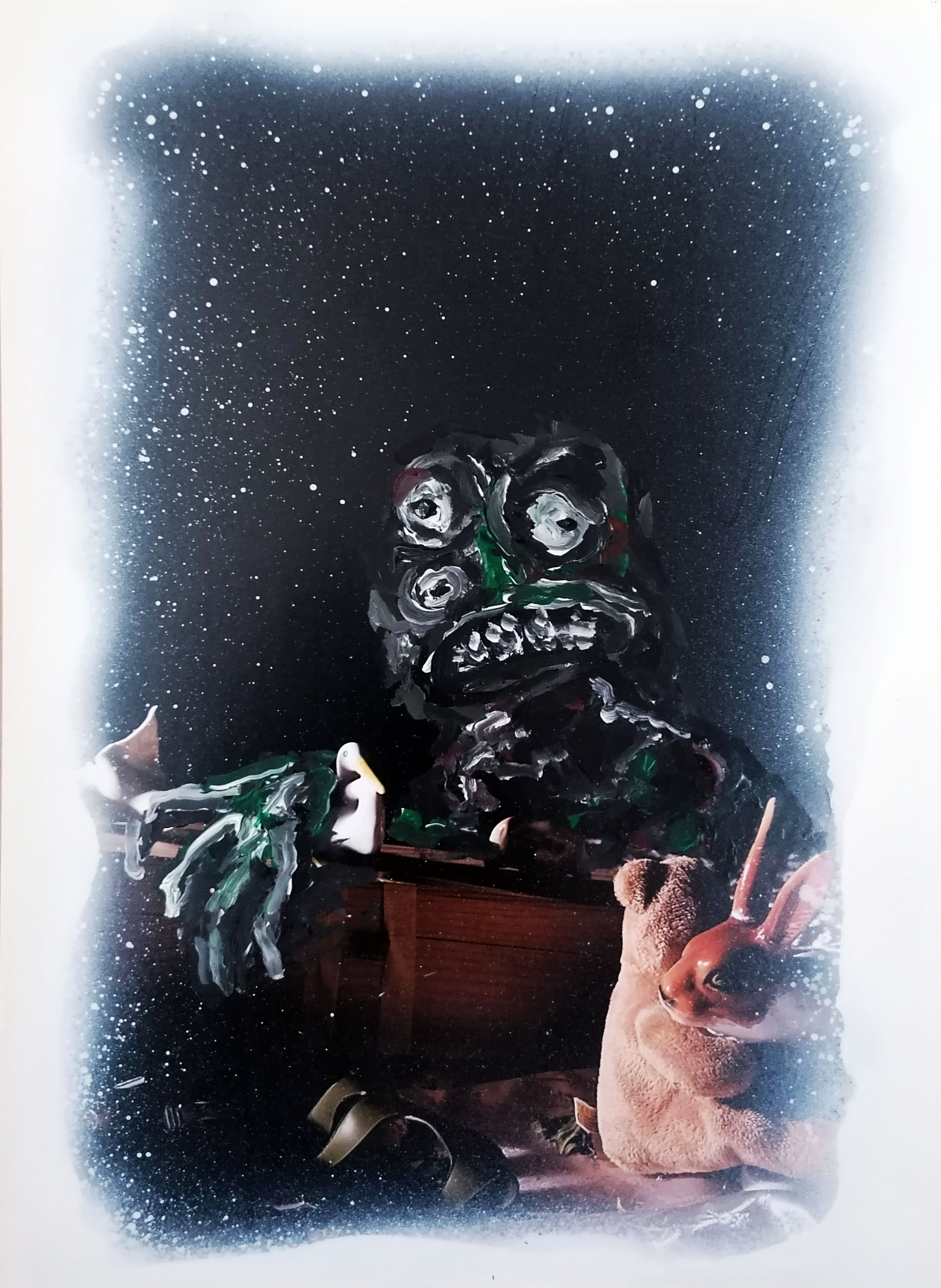
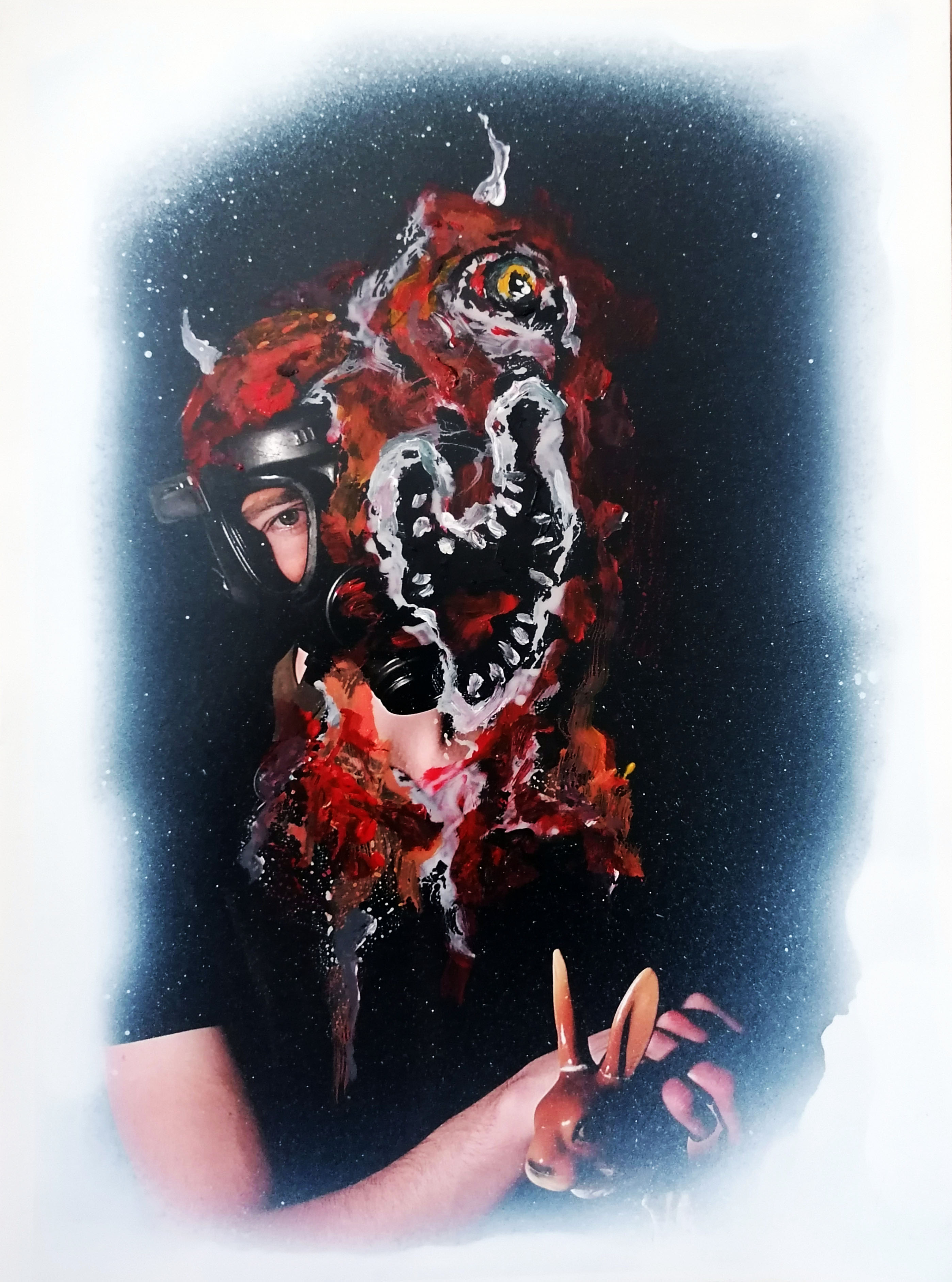
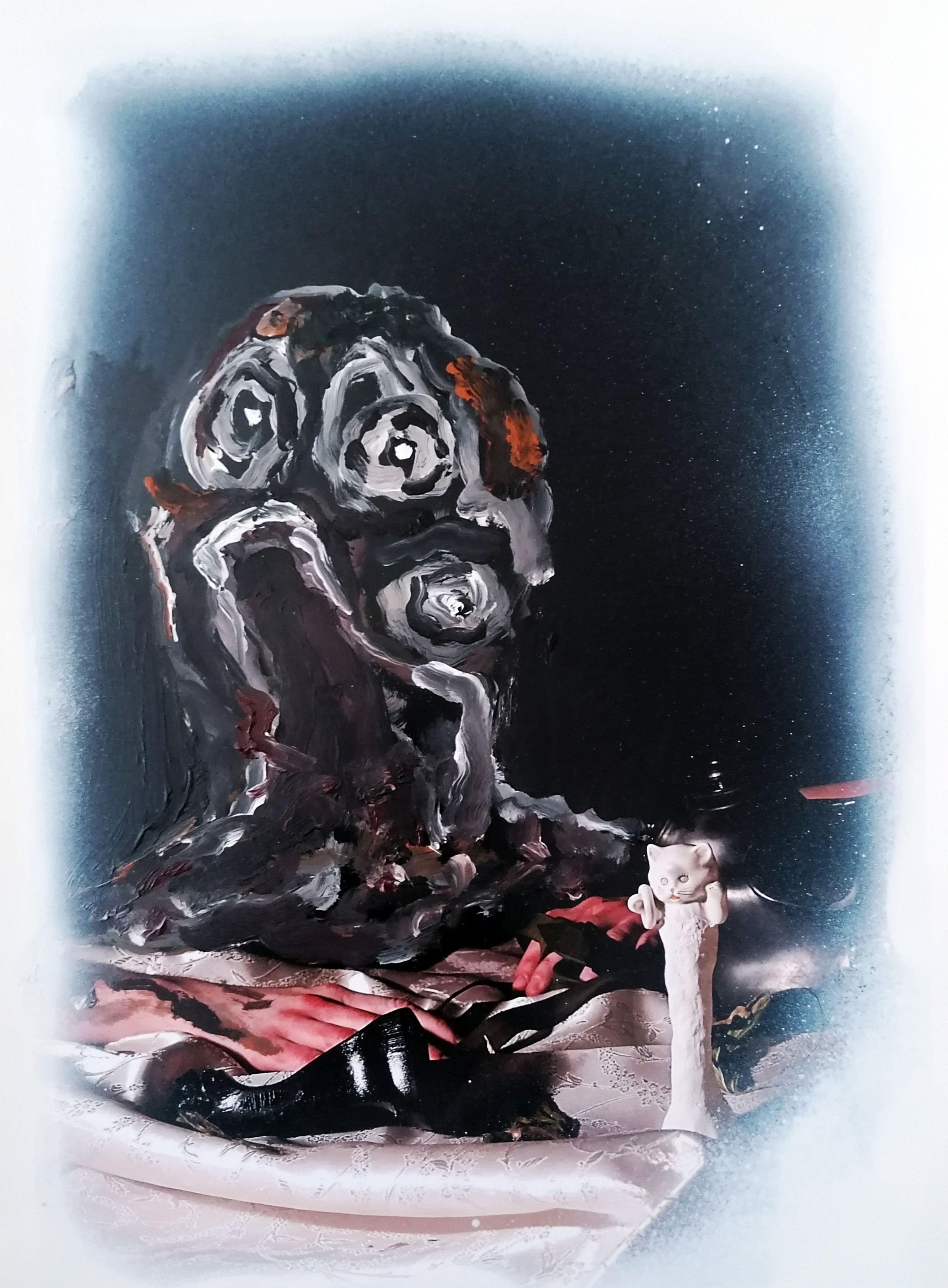
– – – ( drawings ) – – –
~ exploring the depths of the inner (balkan) world through black ink on white paper ~
visual journal i – 2024
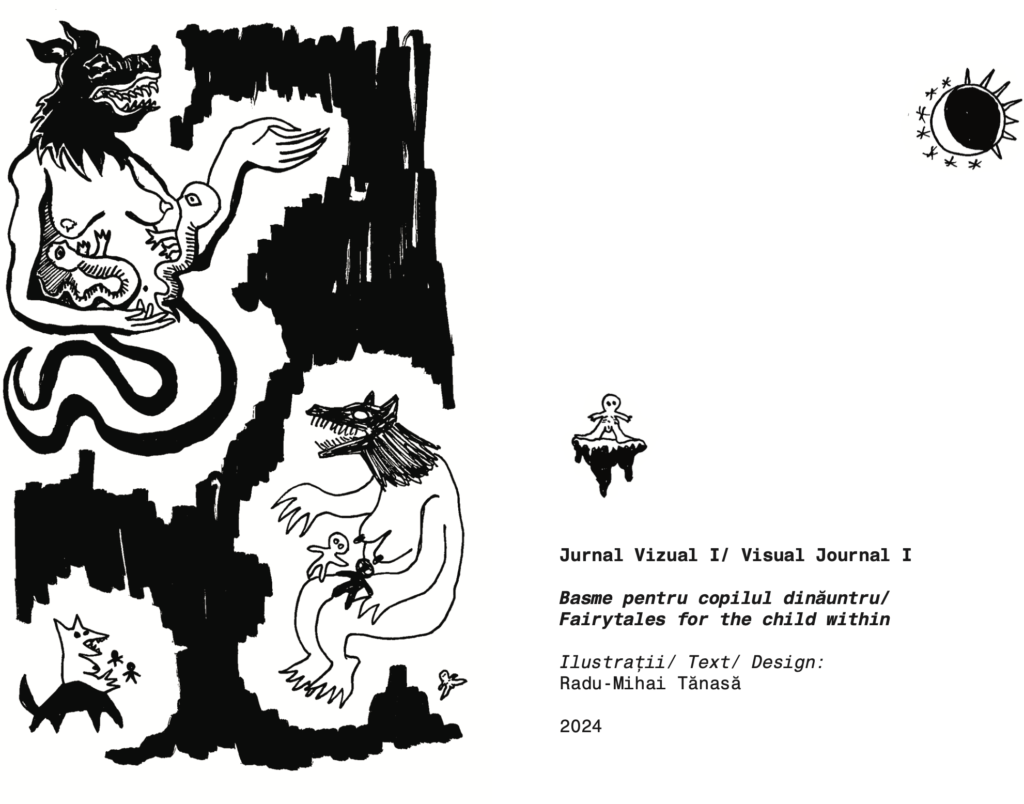
visual journal i (fairytales for the child within) follows the story of one peculiar being, whose head is that of a child, torso of a teenager, and lower body of a man. the illustrations were taken from a personal journal i kept from 2023 to 2024.
the being itself is an analogy for my lived experience as a man, as i struggle to understand and comply to societal and self-imposed standards of what it means to be a true man. this concept gets even more complicated as i am caught between two worlds (nl/ ro) whose expectations are both very similar yet very different. travelling from one world to another is a recurring theme throughout the zine.
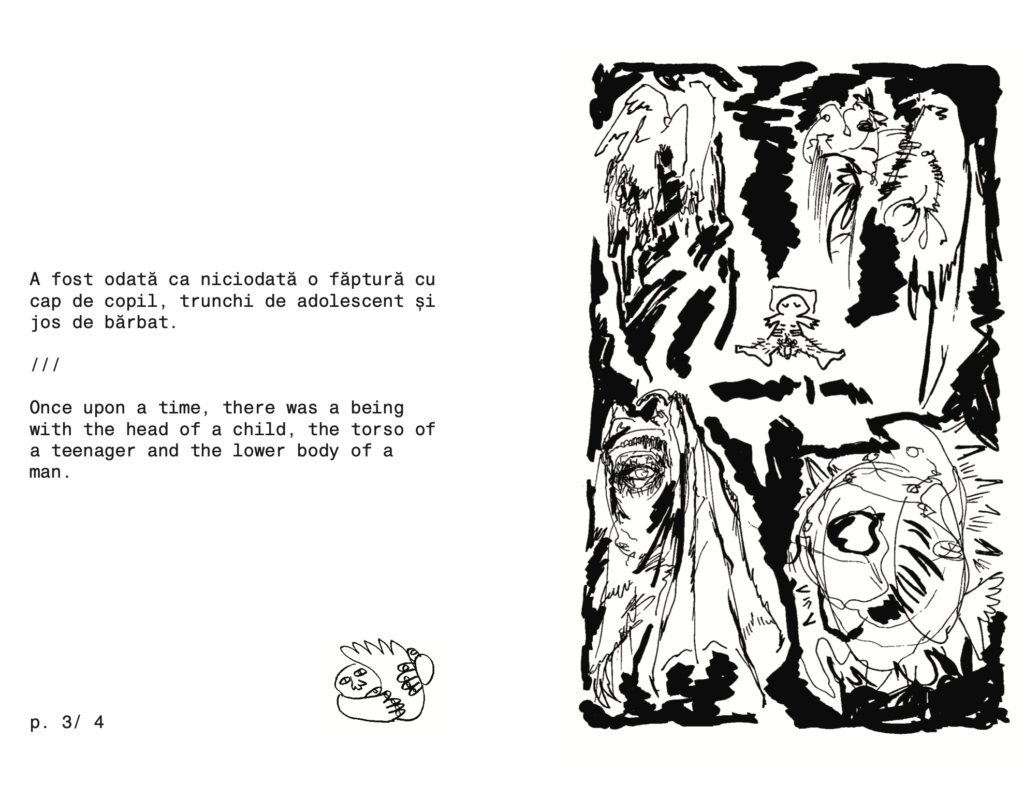
the zine can be purchased upon contact. standard price is 8 euros, european shipping guaranteed, with possibilities for global as well.
zine is also available on singular papers
technical details:
60 pages
romanian/ english
black and white on photocopy paper
modified a5
staple binding
2024
isbn coming soon
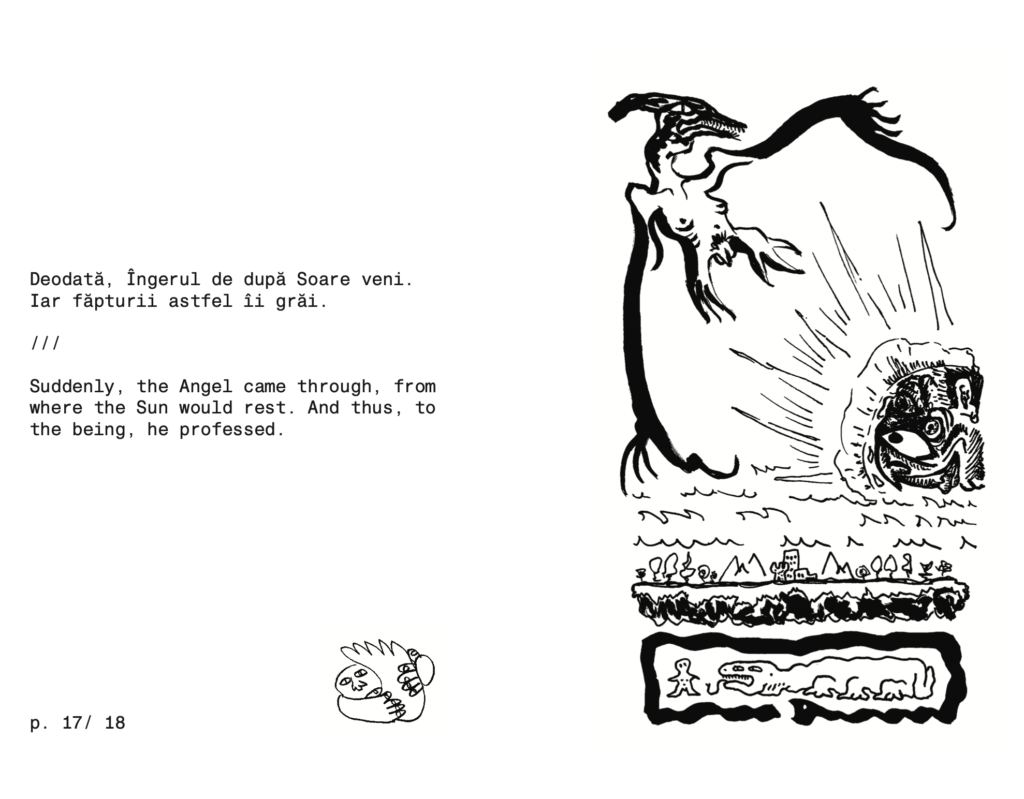
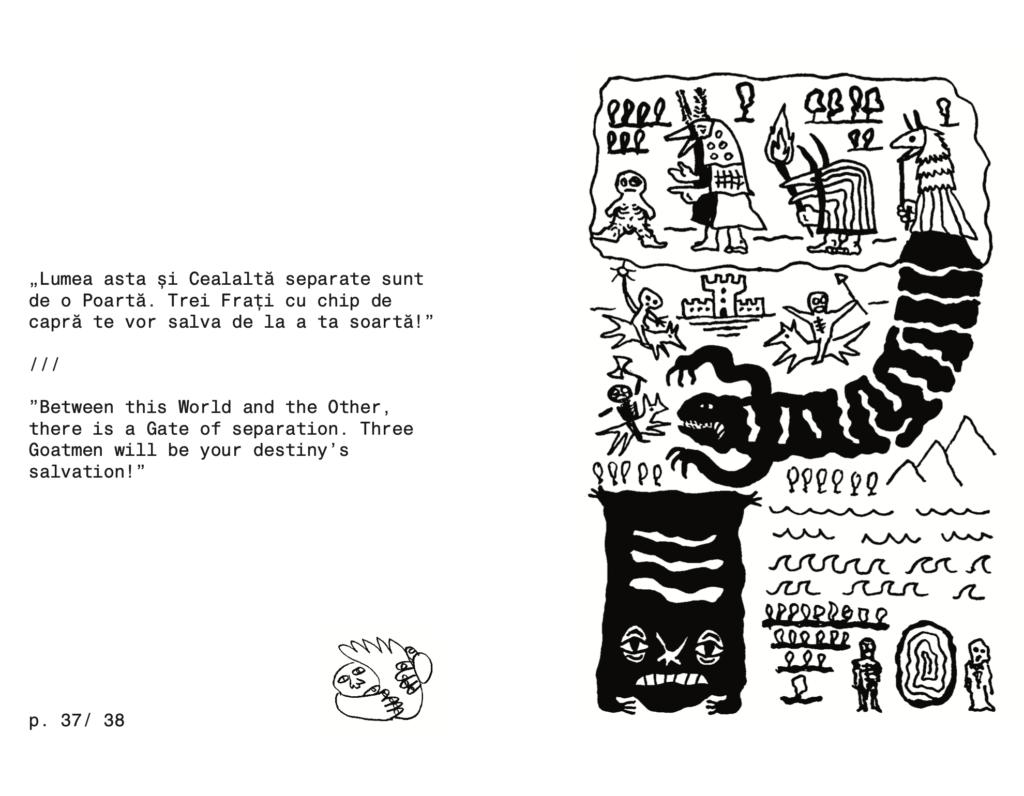
the zine, in its style and presentation, is a nod to childhood fairytale books i have inherited from my parents.
these books, printed mainly during the 70’s and 80’s of communist romania, are iconic for their blend of local visual folklore, as it was depicted on clothes, architecture and oral tradition; combined with byzantine-inspired illustration cannon, making heavy use of the inverted perspective, with scenes populated by characters that had more abstract body shapes.
inspired by the work of done stan:
– – – ( side stories ) – – –
~ alternatives to the main cannon ~
untitled (the păcurari cug tram) – 2023
the title “the păcurari-cug tram” refers to the two neighborhoods where i spent most of my life; one belonging to my grandparents, the other to my parents. between these two neighborhoods there has never been public transport that would go from one end of one neighborhood to the other – the only direct connection between them was the personal-affective one, through the memories i made.
the content of the video artwork is made up of distorted archival frames of my grandparents’ apartment superimposed on a video game scene whose virtual environment is a replica of my parents’ neighborhood. the contrast between archival and virtual frames reflects the effect of personal memory: the grandparents’ apartment as i knew it, no longer exists – only the recorded frames still recall its last moments of life.
although it is real footage, unlike the video game scenes, both frames are in theory virtual images, an imitation of the real. affective memory does not take concrete reality into account, but creates its own imaginary universe – just as i used to imagine a tram that would have taken me from CUG directly to păcurari.
the present work is an attempt to continue the narrative created in my dissertation project “what if you embraced your inner stereotype?” – stories about what it means to be a romanian emigrant.
– end of transmission –
untitled (palace of culture I) – 2022
untitled (palace of culture i) is a collection of shots that depict a virtual reconstruction of the building with the same name, which is considered the main symbol and visual identity of my natal city of iași, romania; all of it in the virtual space of grand theft auto: san andreas.
– – – – –
firstly, having a building that is self-proclaimed “the palace of culture” in a video game about the trials and tribulations of mafia life already creates a contrast optimal for harboring an interesting setting for the film.
secondly, as part of my research into how to frame contemporary eastern european (masculine) culture in regards to present-day postcolonial theory, exploring how the implied story of gta:sa can be used to talk about my background is a key step in negotiating the inherent power dynamics and ethics of using cultural appropriation as a discursive/ artistic method.
– – – – –
in framing the universe and stylistics of gta:sa as part of the west and therefore western culture, having interventions and/or markers of the second world space constitutes for me at the very least an exercise in creating so-called diaspora aesthetics. the difference I bring is that these aesthetics are confined to the virtual space in this context.
– – – – –
lastly, framing the subject that is the building in the context of gta:sa is a personally relevant choice in the sense that the game has not only been an intimate part of my childhood; but it has also garnered an immense cult-following.
untitled(c.u.g. i) – 2021
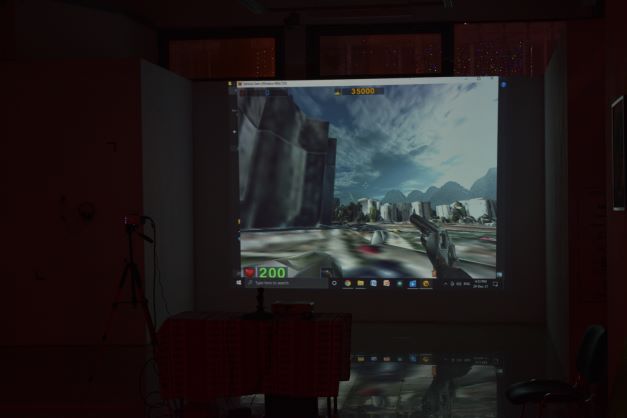
untitled( c.u.g. i) is an interactive art installation that consists mostly of a modified/ hacked virtual copy of the shooter game “serious sam: the second encounter”, to be projected on either wall or on a digital screen.
the main virtual landscape consists of a deformed copy of the my childhood neighborhood (c.u.g. – iași) implemented using 3d data from google maps, which the audience can explore using the provided controller or modified keyboard and mouse.
– – – – – – –
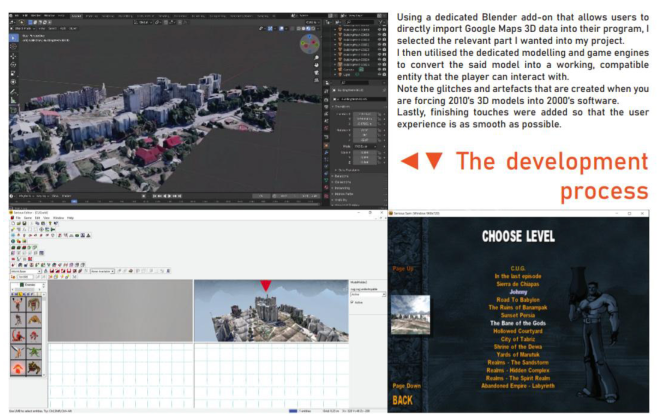
– – – – – – –
i wanted to create a work of art that used the apparently cold language of software and programming to talk about my personal experience of living in 2000s-era romania, in an ex-communist neighborhood that suffered economic and social degradation after the 1989 revolution, as well as the oncoming waves of liberalization.
– – – – – – –
– – – – – – –
lastly, i felt that being born at the end of the 20th century meant that i have the opportunity, or rather the responsibility, to express the visual language of the new century through newly established mediums that have already left a lasting impact on our culture and society at large: the screen, video games, and the internet.
using a combination of the choice of video-game genre (first-person shooter), the choice of the game (“serious sam: the second encounter”), and the choice of hacking or modifying a piece of software for artistic usage, the work rejects classical ways of representation to speak on the social and cultural aspects of living in romania during the 2000s.
– – – ( prequels ) – – –
~ before it all began, how the world, the characters and the places came to be ~
untitled (i love my culture) – 2022
what if you (un)ironically embraced your inner stereotype?
– – – – – – –
is there anything of value you could gain from performing your (former communist) country’s stereotype(s)?
– – – – – – –
what if there were weeaboos for the balkans. How would that look like?
– – – – – – –
do you fetishize your culture?
(scape)goat – 2022
(scape)goat presents a short story about what it feels like to not fully fit in as a romanian in the netherlands.
it explores how time is experienced through the variable that is identity, and how that perspective shapes your perception of both the world around you, and your own self.
– – – – – – –
the movie follows the journey of one odd, unnamed character, that seems to be lost in what seems to be the city of amsterdam.
short clips seem to constantly interrupt the flow of the main narrative, and it is quickly clear that they too have a story to tell.
although disjointed at first, these competing narratives seem to all be pieces that are part of a bigger puzzle.
shaving.mp4 – 2021
shaving.mp4 is based originally on a performance which has been edited and transformed into a piece of videoart; both parts are made and performed by me.
– – – – – – –
throughout the whole performance, a story of a man and his conflicts unfolds;
different characters and monsters take shape as the protagonist’s original body loses control and gives in to the internal mental struggle;
– – – – –
what does it mean to be a man?
when does confidence end to give way to arrogance, or even worse, rage?
how can you control what is inside of you; is it even under control?
– – – – –
the shaving cream might be considered a humble material, but for many men it is an integral part of their daily life and gender experience;
by extension, the shaving cream itself becomes a masculine symbol;
the shaving cream marks the transition one has from childhood to manhood: it is during your first shave that you realise you are no longer a child;
but you are also not a man just yet;
– – – – –
if one concept could be considered central, or symbolic to the whole work, it would be the idea of a “masculinity crisis”;
an experience that is almost universal, familiar, even defining some would say, to almost any man.
a “masculinity crisis” can happen at any point in one’s life; it does not care for age, looks, or status; in its absolute power it does not discriminate;
the only question is: are you “man” enough to face it?
behold, a man – 2021
according to diogenes laërtius, when plato gave the tongue-in-cheek definition of man as “featherless bipeds,” diogenes plucked a chicken and brought it into plato’s academy, saying, “behold! i’ve brought you a man!”
– – – – – – –
a short and simple performance about male puberty and coming of age. as someone who cannot grow (yet?) a full beard, the act of shaving is not euphoric for my gender expression, as with every follicle of hair that is cut, i feel myself reverting back to a pre pubescent state.
– – – – –
even as an adult, i feel that my body keeps me somewhere in-between boy and man -hood; i am as manly as diogenes’ man
gallery show at the contemporary art museum – 2021
gallery show at the contemporary art museum was a performance made (il)legally within the construction site of the building (which was to be) entitled the international center of contemporary art iași.
the video archive was then turned into this video you are watching now.
– – – – – – –
an almost-human character runs an almost-normal exhibition in an almost-finished art gallery. it assumes almost all the roles of a staff involved in an opening, from the artist herself, to the curator, cleaning staff and even the audience.
– – – – – – –
secondly, we wanted to draw attention to the state of contemporary art in the city of iasi. the second largest city in romania has an almost non-existent contemporary cultural infrastructure. we think this is worth changing.
– – – – – – –
a year ago, in february, the building was supposed to be ready. the administration pretended it was working, and we, in turn, pretended to exhibit and provide cultural services.
love story – 2019
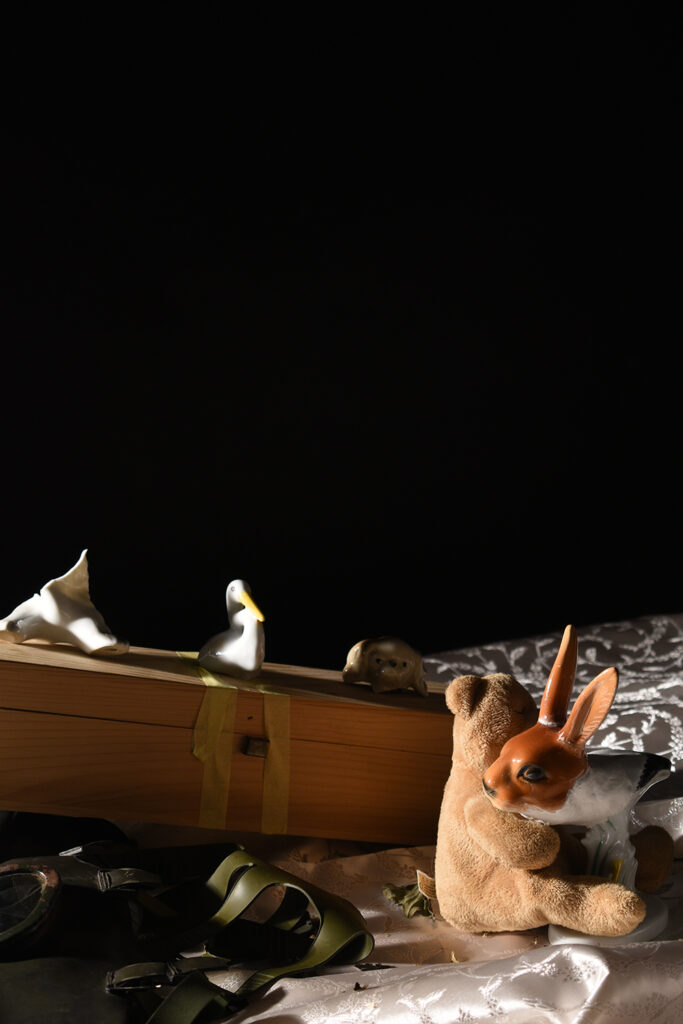
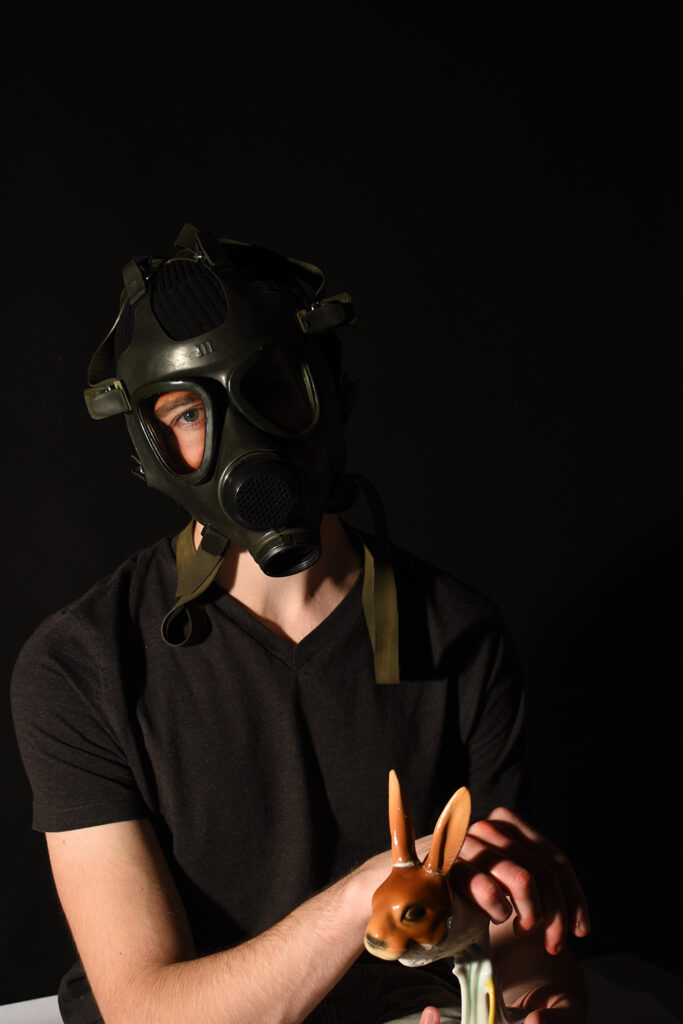
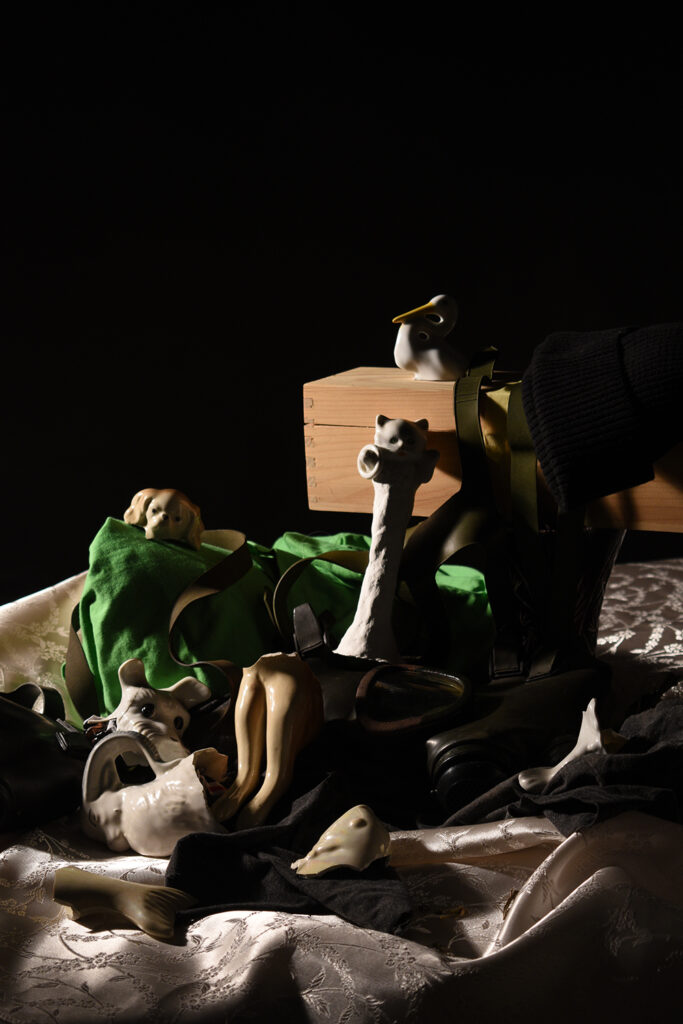
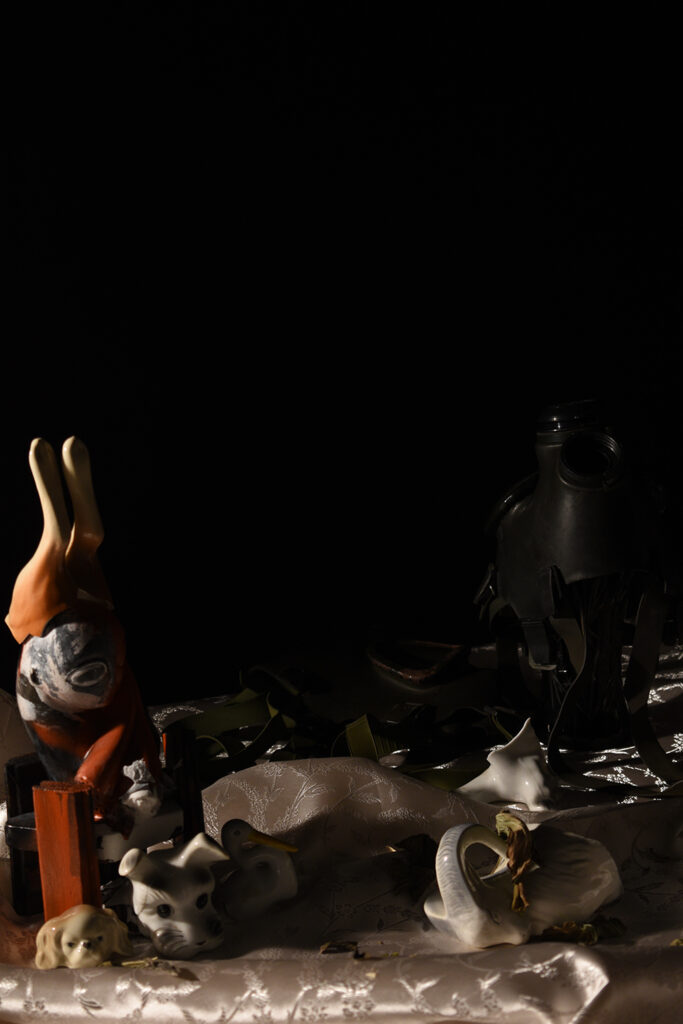
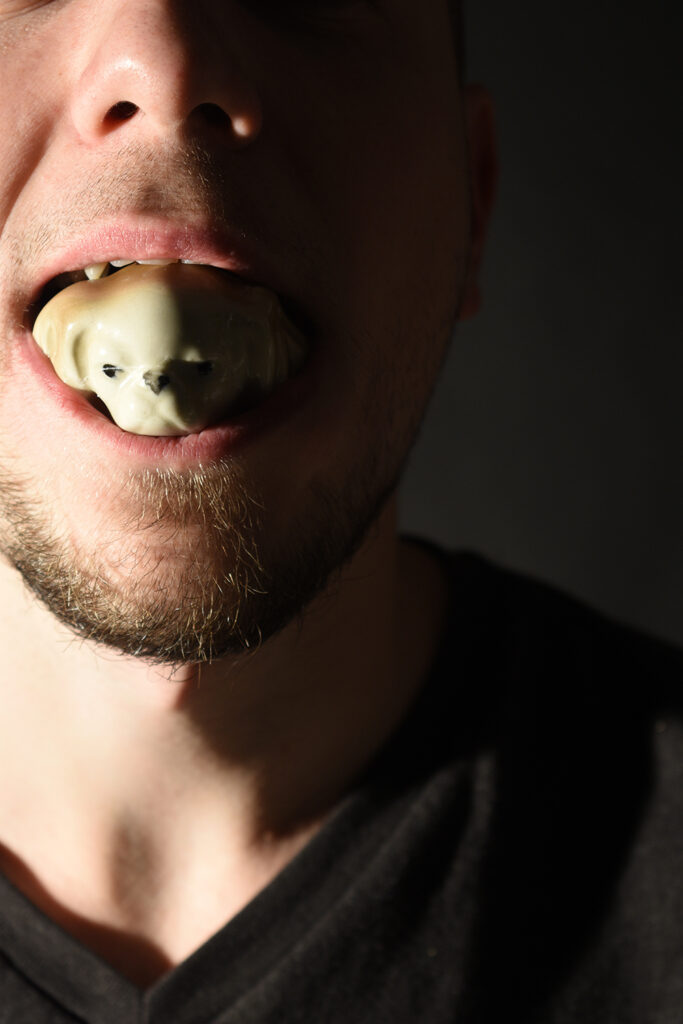
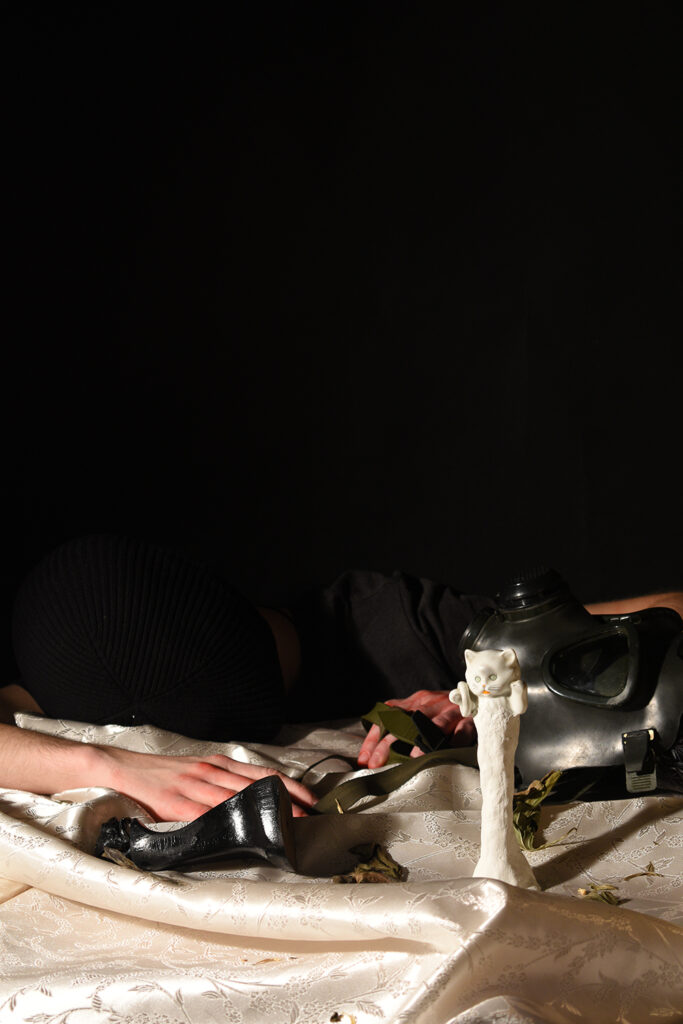
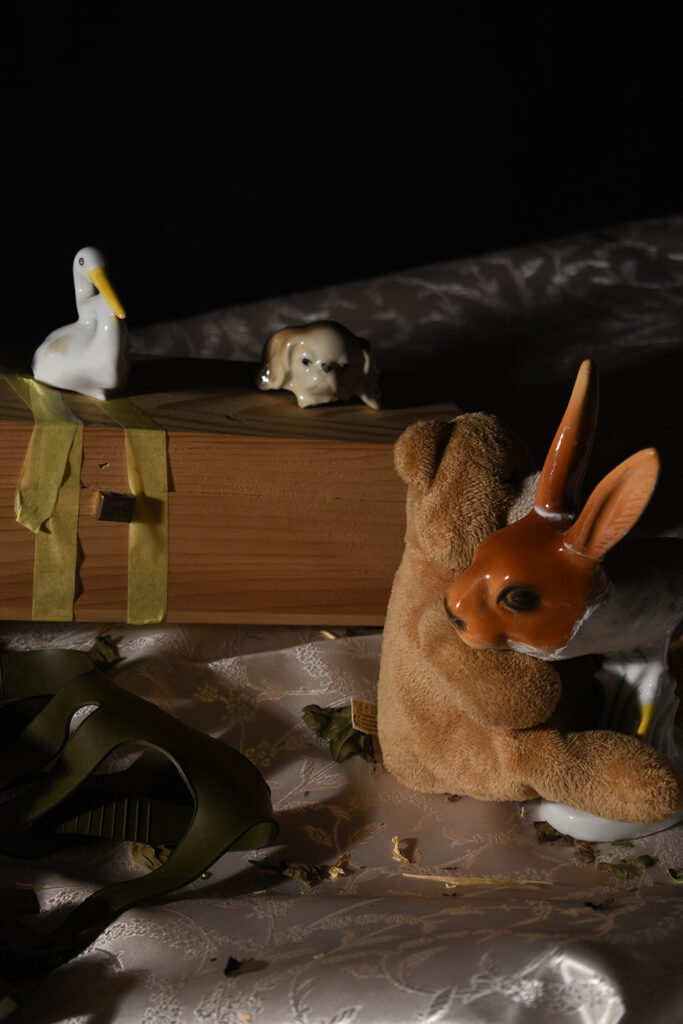
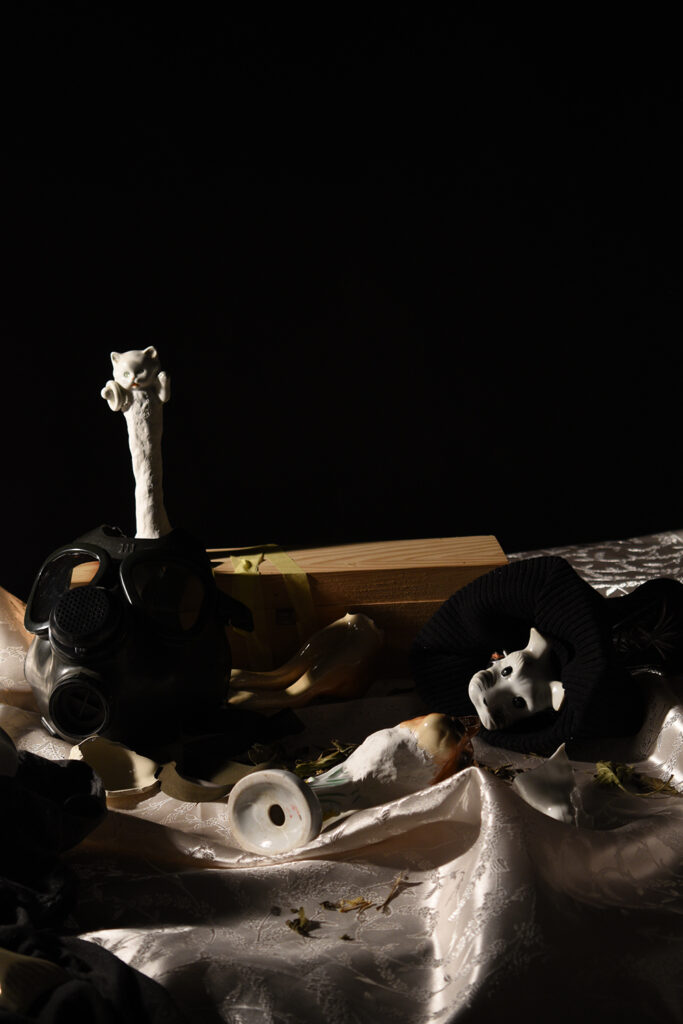
love story is exactly what it sounds like. through this photo project i was trying to explore new modes of expressing masculine vulnerability, intimacy and power; all of course with a classic touch of experimental balkan aesthetics
– end of transmission –
exhibitions
below a list of exhibitions where not only was my work shown, but where I have actively contributed to the project’s development, organizing, curation, production, set-up, and/or much more:
[ – – – 2025 – – – ]
xyz. înapoi în viitor – 03.10 / 05.10
coming soon!
“full night” – the best internet cafe in romania – 25.04.2024 – ongoing
link to the full interview > here <
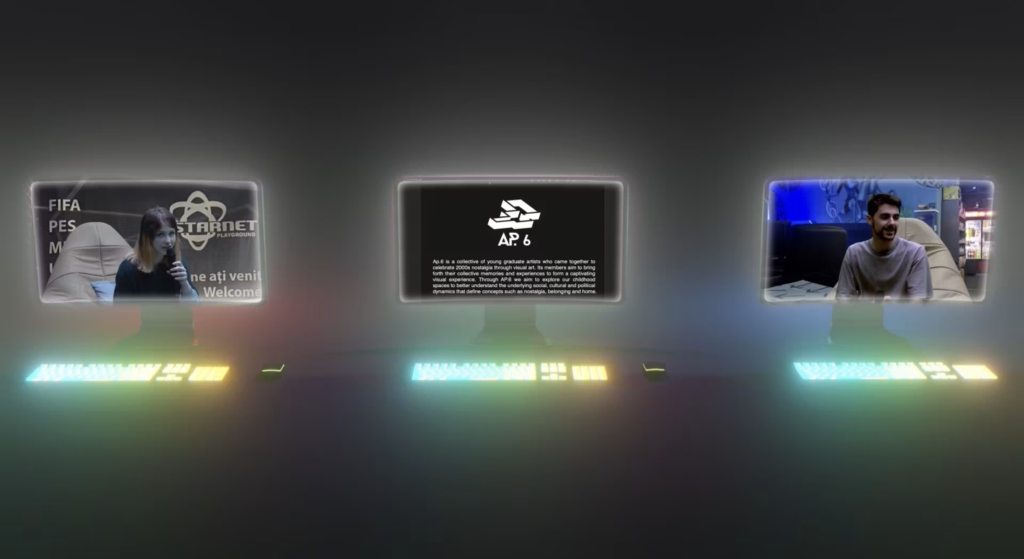
during the 90’s, western pc’s slowly became accessible to the romanian population. while most people did not have the necessary resources for buying one, they certainly had enough pocket change to rent one for a few hours. these places who would offer computers to rent, later called internet cafes, became meeting points for the youth, developing a distinct community and subculture. after two decades, this trend has continued to survive and evolve in a very particular, unique way in the city of iași.
visual artists radu-mihai tănasă and ruxandra mărgineanu (under ap.6) aim to reconstruct the history and attempt to better understand the phenomena, as they have experienced it as avid visitors and long-time members of the subculture. the project analyzes the impact of technology on culture and young people in iași, romania, with an emphasis on the emergence of internet cafes and the development of a distinct subculture related to these spaces.
link to the inc longofrm that goes into more detail:
https://networkcultures.org/longform/2024/06/21/starnet
2025 Update:

a discussion on nostalgia, (retro) gaming and alternative virtual spaces and how the virtual and the physical inform each other and the internet at large
[ – – – 2024 – – – ]
romaniacore – 20.12 / 30.12

production systems or generation systems, bruno latour wondered in one of his eco-political essays. art should generate, that is, self-generate as an effect of the reality from which it comes. on the one hand, representation, on the other hand, displacement or participation.
the present project of the artistic collective apartment 6 comes precisely from this constitutive tension of the artistic gesture. guided by a critical scrutiny of the encounter between affective biography and political space, the three artists propose, allusively, an inter-media intervention that would open the way to a dialogue of opposites. and when we say dialogue of opposites, we say dialogue of plural portrayals of an ideal romania, a concept confiscated by electoral promises and emptied of any specific meaning.
to generate an ideal romania means to imagine an absent place, a transcendental signified that is projected into the exteriority of the mind as an undefined and differential archetype. how do we share this archetype that differs from itself from personal space to personal space? the radicality of this approach does not consist in contestation, but in the confession of an encounter between solar affects and visceral affects, between critical nostalgia and fictionalizing mythologizing.

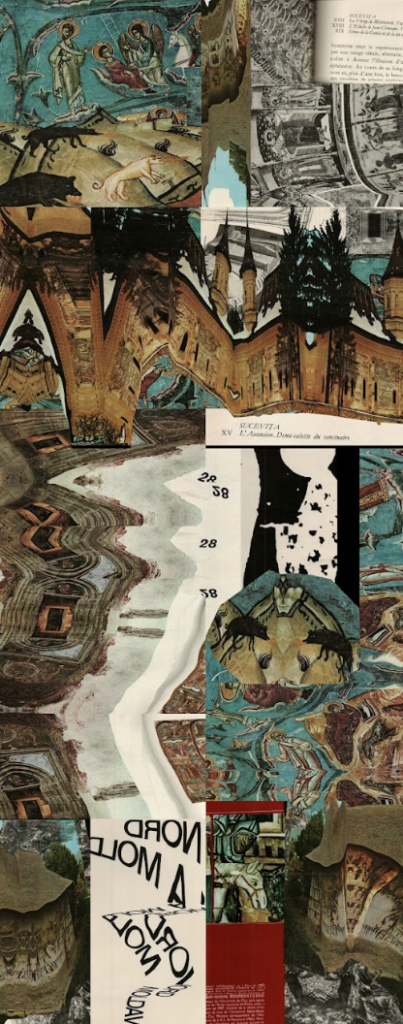

– – my project: – –
starting from a transgenerational personal archive, radu-mihai tănasă explores how the image and narrative of the romanian space are shaped through the prism of various publications from the last century.
from comic books and communist almanacs that propagated the image of the socialist republic of romania, to books published in western europe about the churches of northern transylvania and their spiritual significance, radu-mihai tănasă is interested in the difference between one’s own cultural perception and that of others. nostalgia acquires both personal, cultural and political valences, especially from the artist’s diasporic perspective. the diasporic pilgrimage appears as a process of awareness of a dysphoria manifested by the feeling of uncertainty in the face of the future.

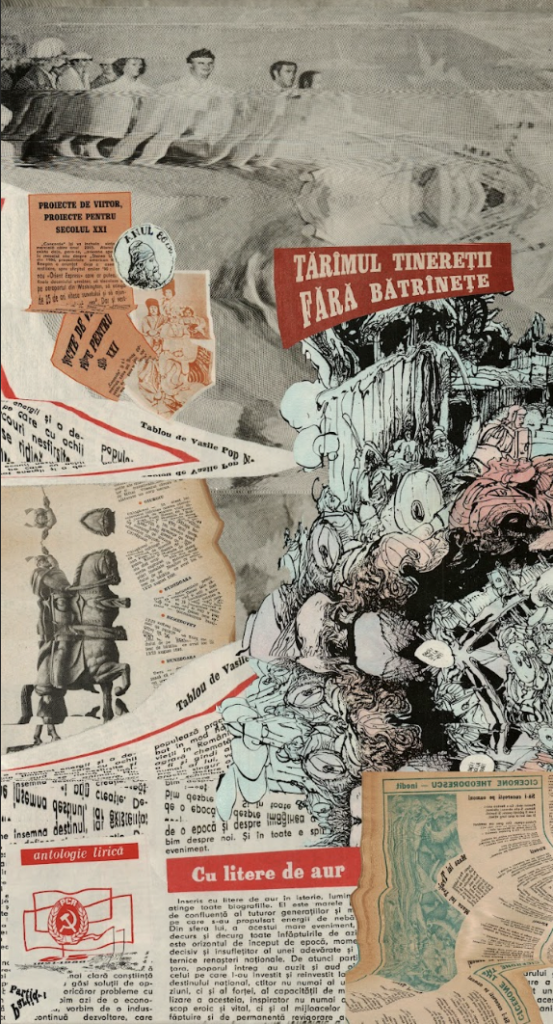

how could we accommodate this feeling in our own subjectivity? through fictionalization, or in other words, through futurological mythologizing. the artist suggests that the ideality of a portrayal of Romania cannot exist outside of a conflict of ideologies.
etaju’ 1 – 03.10 / 08.10

“etaju’1” proposes an exploration of the notion of intimacy and everyday space. the artists transpose the intimate space – the personal home – into the public context of the gallery, inviting visitors to enter a universe in which the individual biographical dimension overlaps the common experience of living. the artistic group ap.6 reconstructs a typical apartment, with a kitchen, living room, bedroom, bathroom and storage room, rooms with well-defined roles, but which also become a starting point for artistic explorations of personal and collective space.
as the philosopher gaston bachelard stated in his work the poetics of space: ”the journey into intimacy is neatly evoked by drawers, cupboards, wardrobes and above all locks”. the home is a place of deep intimacy and safety, where space reveals its true poetic dimension both through the personality of the occupant and through the physical characteristics of the rooms. the works on display speak of the multiple dimensions of intimacy and invite a reconsideration of our relationship with familiar spaces.


thus, visitors are encouraged to reflect on their own experience of living space and to explore how these spaces are witnesses to the most profound acts of human existence.


– – my project: – –
radu mihai-tănasă transcends personal space alongside a chimerical creature who, through a reflection on stereotypes and his own intimacy, transforms the bathroom into a place of inner liberation. the exhibition “etaju’1” is an analysis of how the home, although deeply personal, becomes a universal space. artists explore not only how intimate space is organized, but also how it gains meaning through their own feelings and experiences.
povești balcanico-fantastice / balkan-fiction tales – 15.08 / 19.08
link to the press release > here <
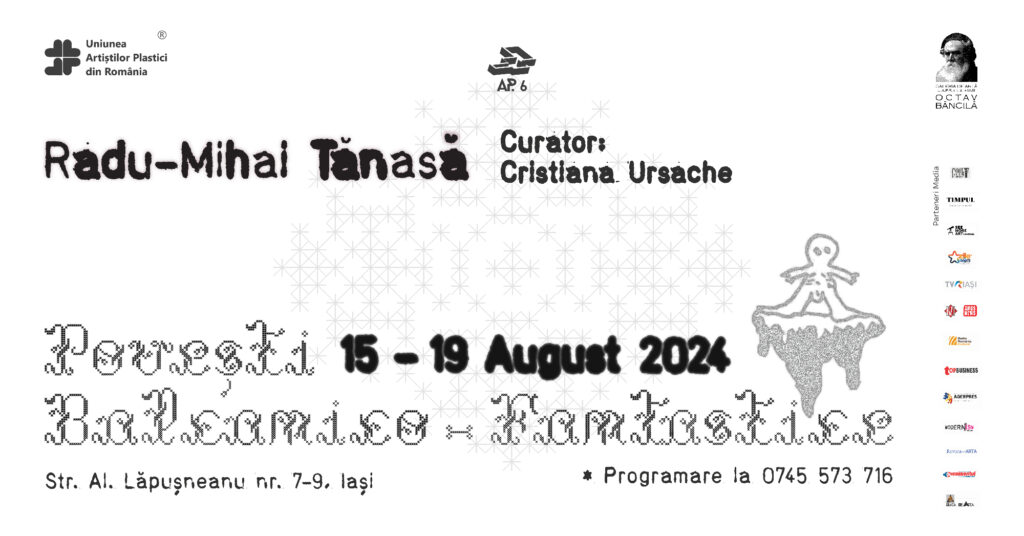
excerpt from the curatorial text:
“radu mihai-tănasă creates balkan-fiction stories, not just through text and image, but also through an incursion into balkan identity and tradition, seen through a critical filter. the artist proposed an interdisciplinary methodology based on video, performance, drawing and music.
he talks about the balkan fantastic and the cultural dysphoria felt abroad through immersive media installations that function as portals to parallel worlds. in these fragments, both visitors and artists are invited to imagine a world beyond the limitations drawn by cultural identity biases and to explore their own version of how they have assimilated this identity into their own personality.”
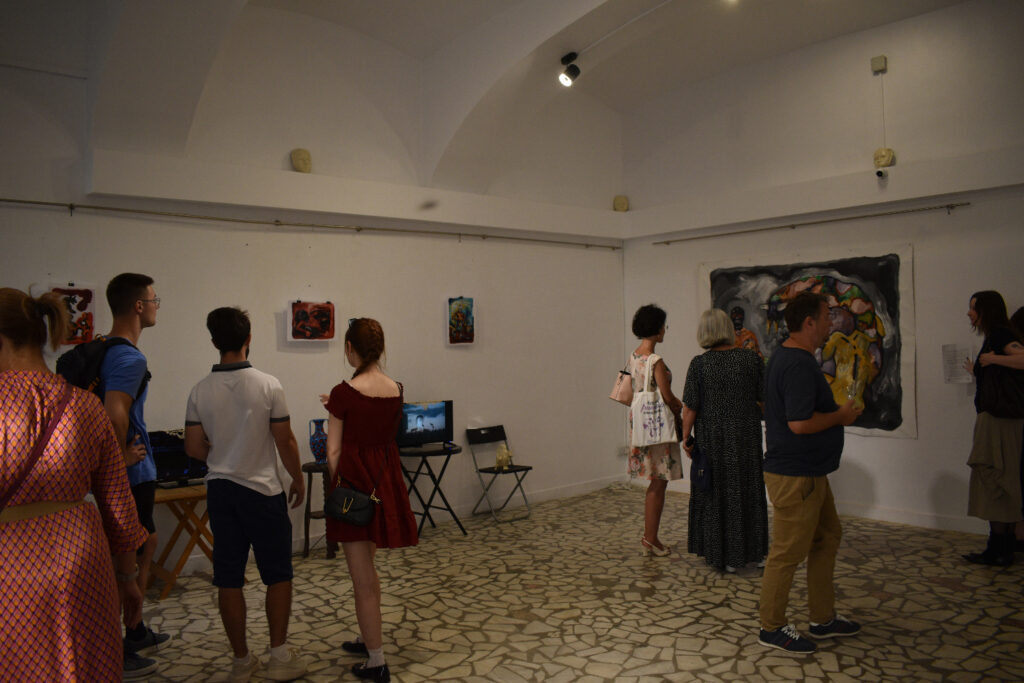

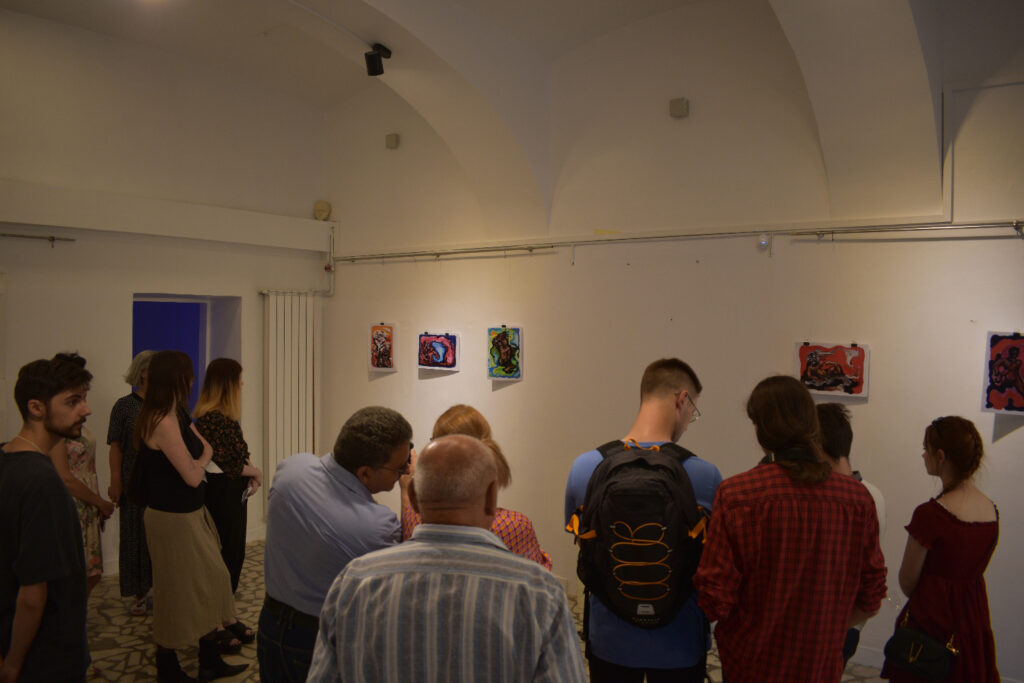
– – my project: – –
in this exhibition you are invited to explore the stories of 6 characters through an interdisciplinary journey to worlds forgotten by time and almost surreal situations. each character was created from the research i did on cultural dysphoria, specifically drawing on bogdan ștefănescu’s research related to the differences and similarities between post-colonialism and post-communism. besides that, i was inspired by slightly stereotypical cultural trends from different periods of romania: pre-christianity, the communist period and the 2000s.
the exhibition is also populated by a few sculptures made/modified by me to give a little touch of immersion to the present works.
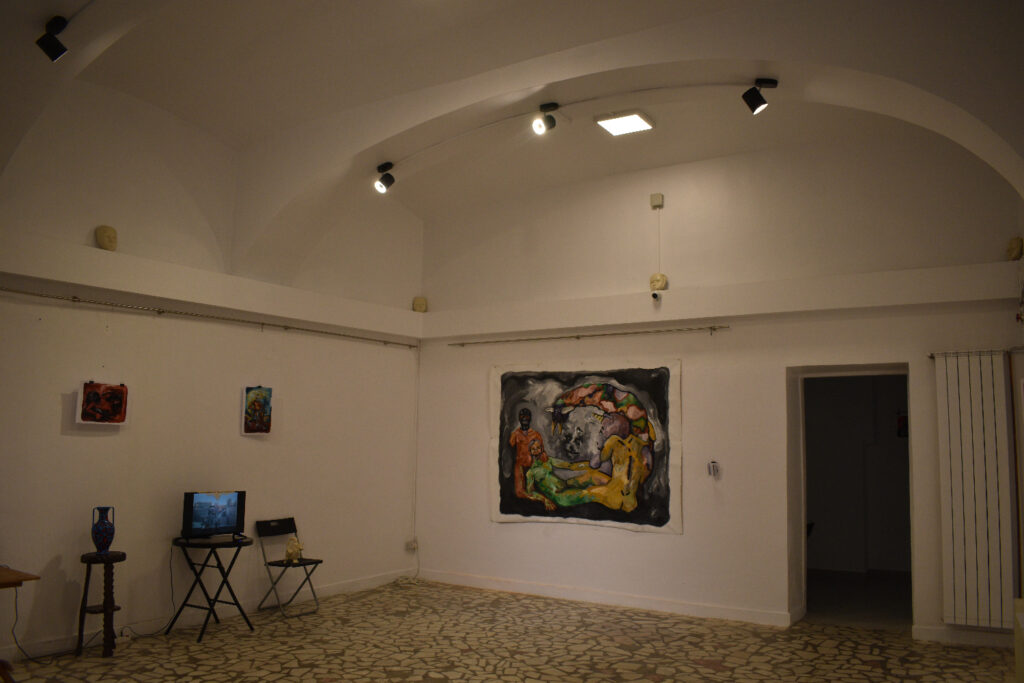
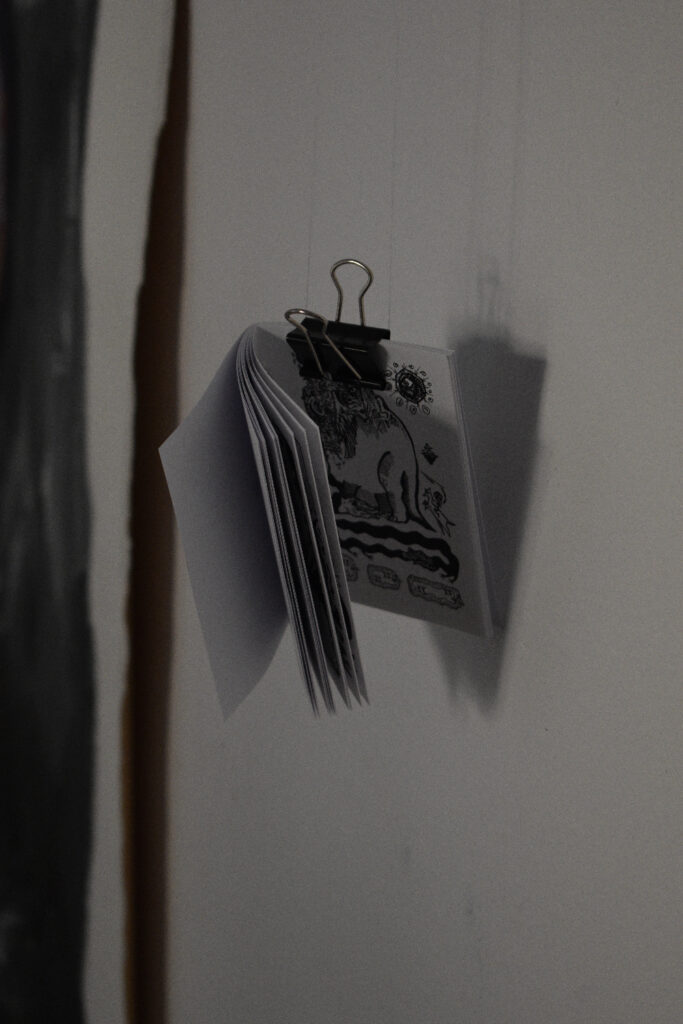
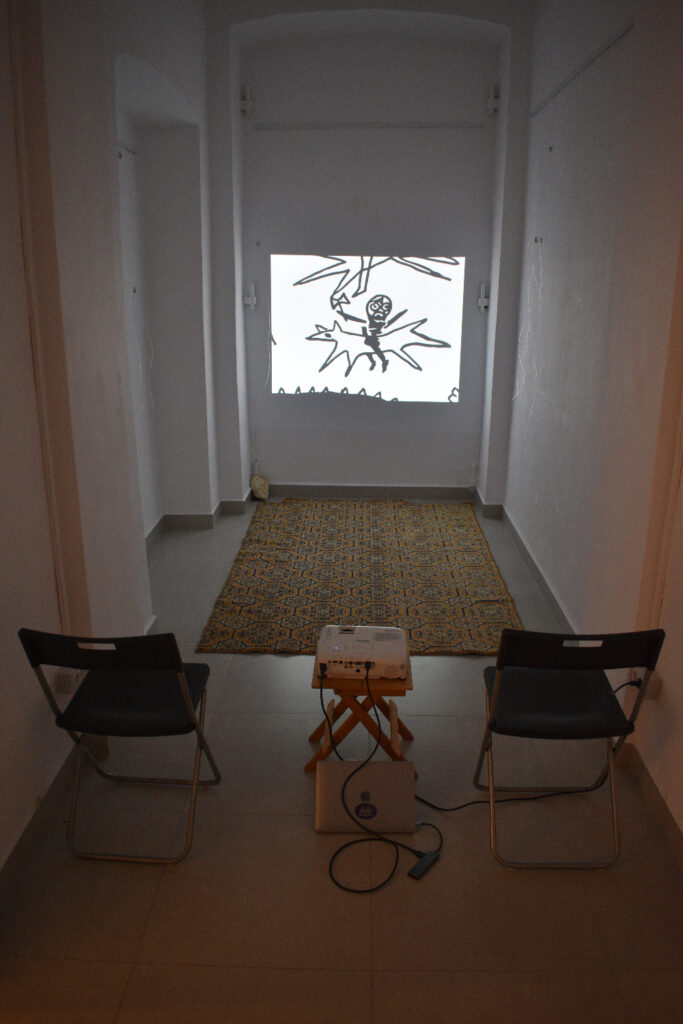
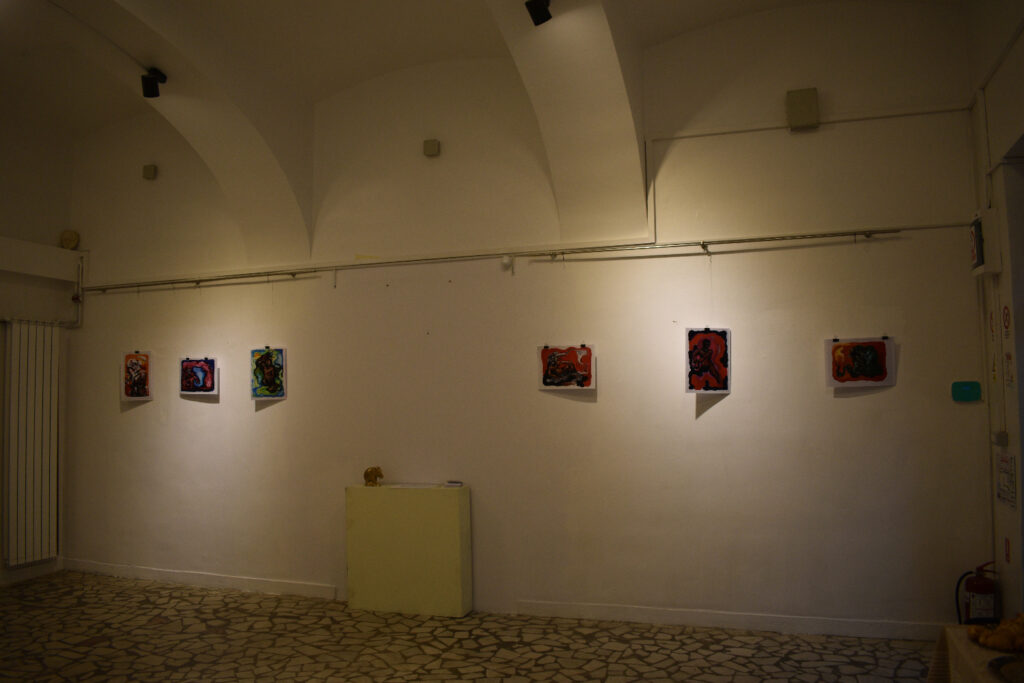
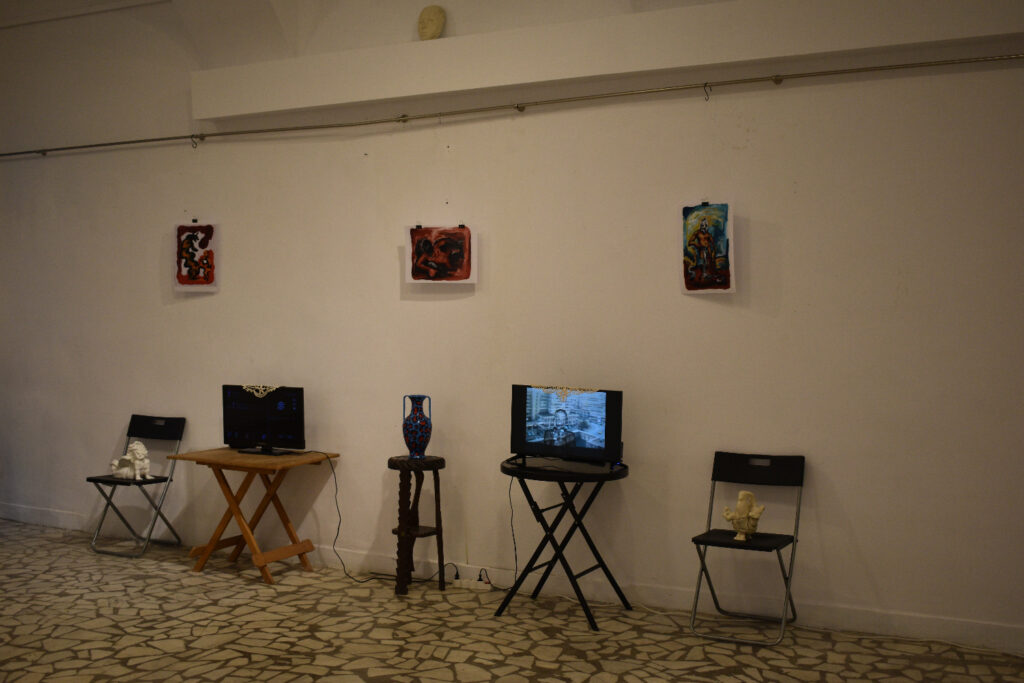
– – povești balcanico-fantastice: disforie culturală – –
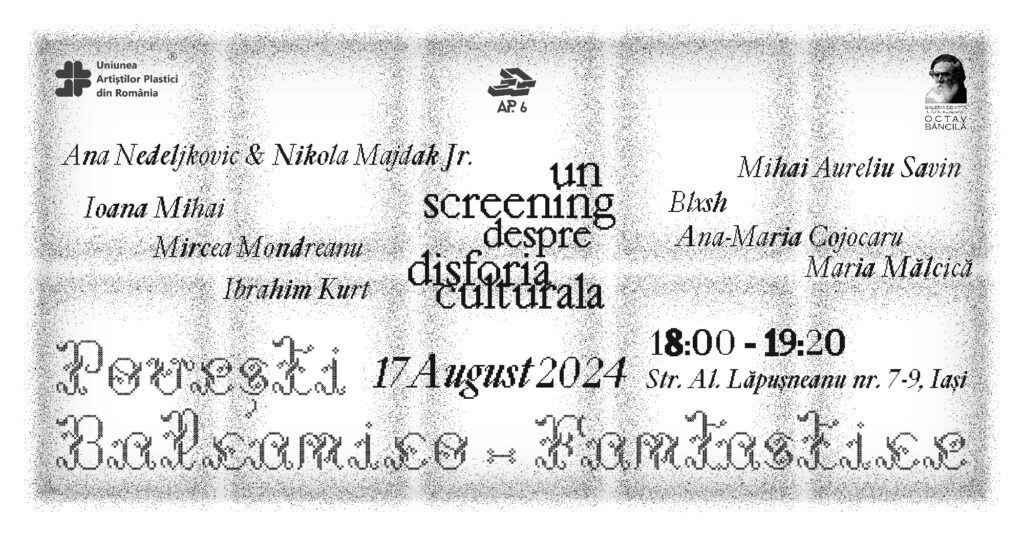
a satellite project done in collaboration with apartament 6, balkan-fiction stories: cultural dysphoria was a pop-up screening event done in the gallery to give a platform for other balkan artists to talk about the subject matter while activating the exhibitional space
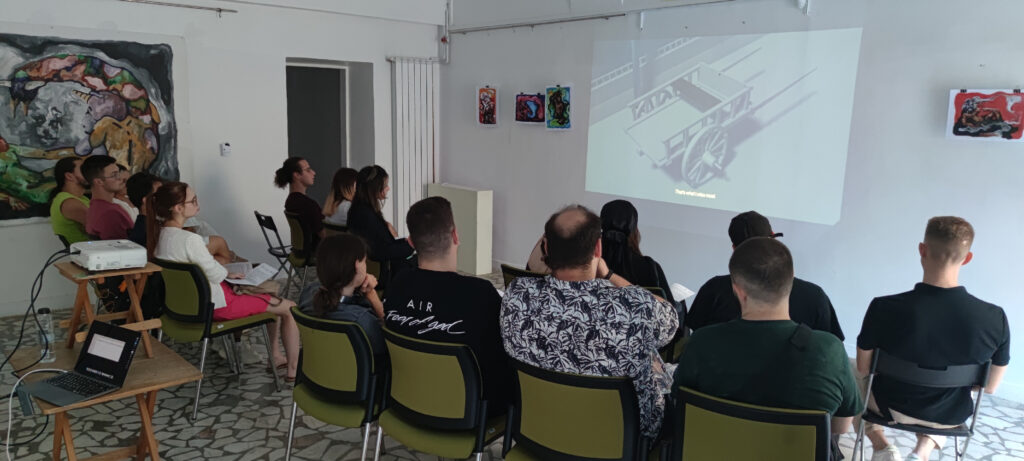
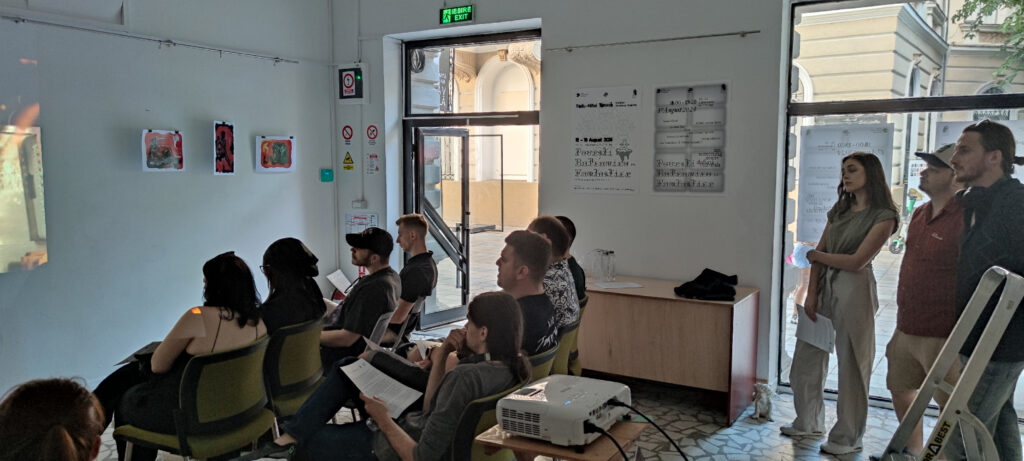
participating artists include:
ana-maria cojocaru
ibrahim kurt
mihai aureliu savin
ioana mihai
blxsh deaddy
maria mălcică
mircea mondreanu
ana nedeljkovic & nikola majdak jr.
subversiune / subversion – 28.12 / 08.01
link to the press release > here <
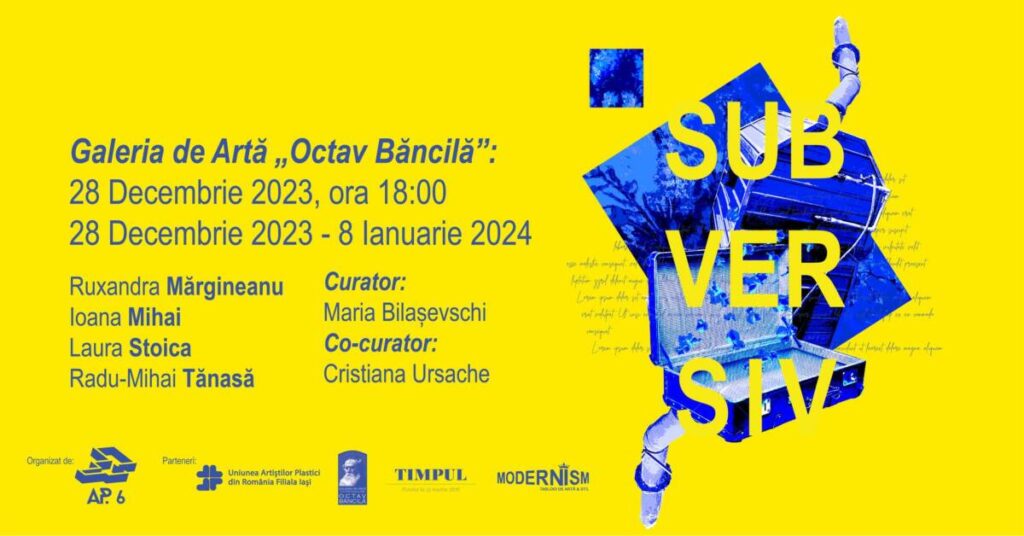
excerpt from the curatorial text:
“subversiv is an artistic expression through which the exhibitors show their creativity by working with elements inspired by people from their past who had a significant impact on their artistic journey.
apartament 6 approaches the subject of the formation of an artist’s personality through the influences accumulated in the past from various contexts with a strong formative effect felt in both a positive and a negative variant.”
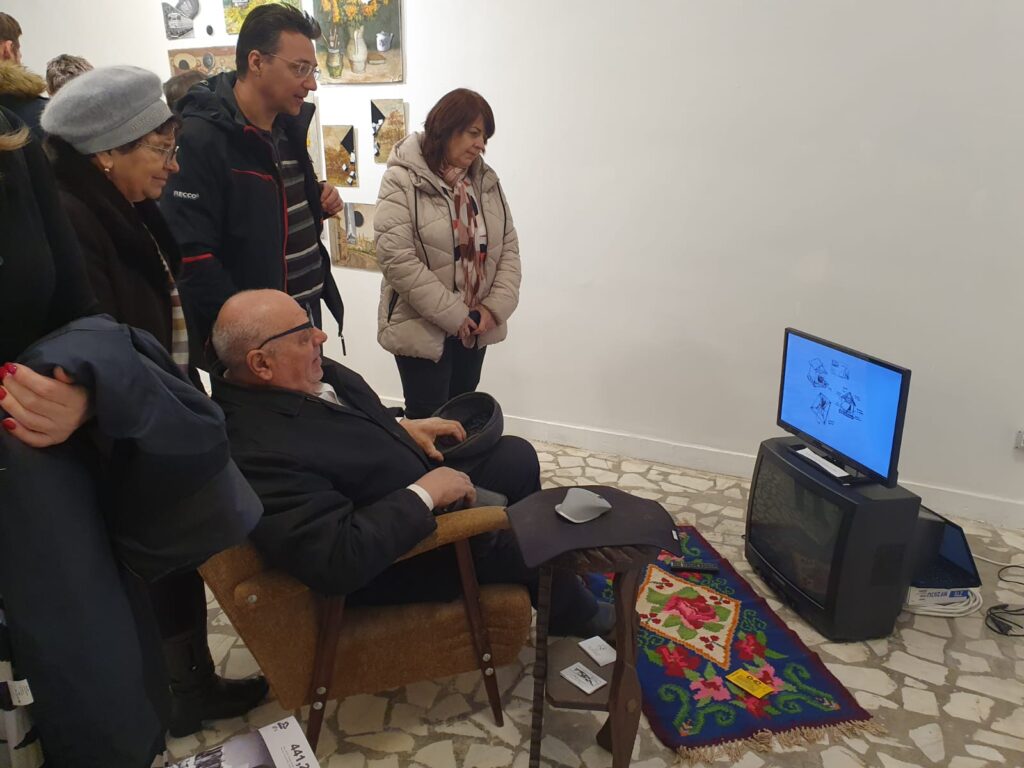
– – my project: – –
an interactive web-archive installation featuring my work called: casa lui Bunicu’, which can be browsed in real time by clicking on the bolded work title.
it tells a short story about searching for support and inspiration as a first-generation artist in a middle class family with a modest upbringing
thewrongbinennale’s “balkan y2k” – 01.11 / 31.03
text
[ – – – 2023 – – – ]
441,2 lei / 441,2 ron – 18.08
a private exhibition/ happening done on 18th aug 2023 as a follow-up to last year’s similar exhibition.
this time, protest turns into practice, as apartment exhibitions become the defining trait of Apartament 6
>>> click here to see the details on the Apartament 6 website <<<

mivc st. joost – “adrift, a shift” – 29.06 / 06.07
to see more details on the overall exhibition and graduated students, please go to:
thecurrent.is
– – – – –
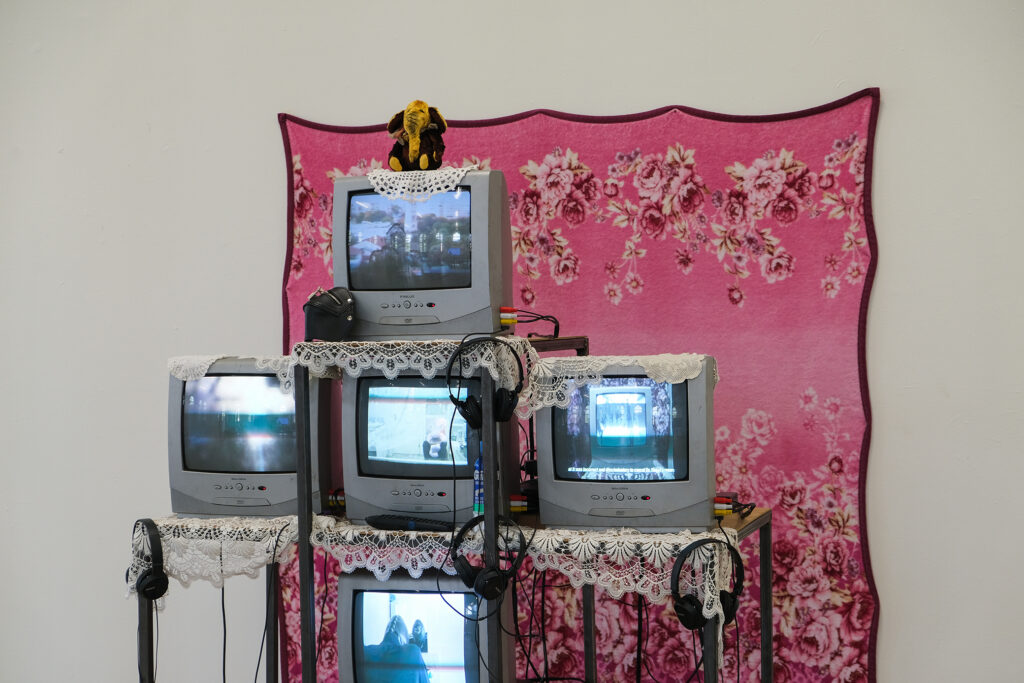
– – – – –
~ it is 8 in the evening. me, my sister and my parents are all in front of the tv at my grandparents’. a few thousand kilometers away in eindhoven, my uncle is just finishing up his shift. he will buy a prepay sim worth 5 or 10 mins call to call all six of us.
– – –
the tv in the living room shows another top story from italy, or maybe france, where another gang of romanian beggars has been captured by the police. my parents are dissapointed, but not surprised.
they make a semi-ironic comment about how we (romanians) are deep down all the same. my grandparents both sad and surprised. they thought of how during the regime, they could never even dream of visiting italy or france.
– – –
i am one the other hand waiting for my uncle to call. i want to ask him if they have tigres and giraffes and dinosaurs roamning the streets of netherlands. he will tell me that there’s not alot of dinosaurs left in the netherlands, but that there are alot of tall buildings and people of all kinds living here – it all looks like new york, he’ll tell me. ~
– – – – –
my graduation work is an instalation that honors these precious memories i had as a child.
all my questions and research about self perception, cultural dysphoria and the complexities of colonialism go back to this symbolic moment of one family reuniting across borders; living in, or seeing themselves through the eyes of the west, trying to make sense of it all.
– – – – –
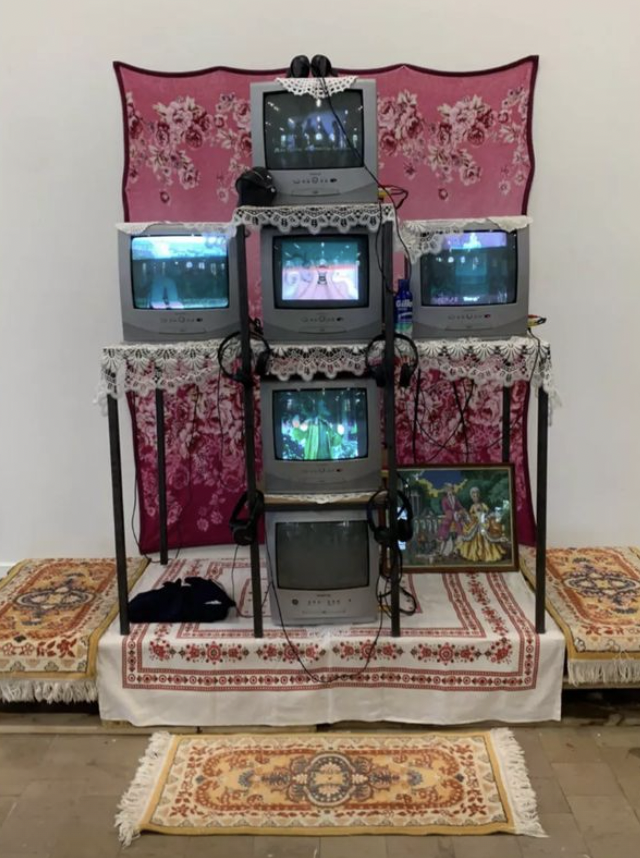
mivc st. joost – diversity dialogues – 10.05
“men, what do we do with them?” |
a diversity dialogues walk-in lunch
a conversation piece by radu-mihai tănasă
– – – – – – –
10 may 2023 | 13:00-13:50 | canteen st joost school of art & design
parallelweg 61 | den bosch
nederlands & english
– – – – – – –
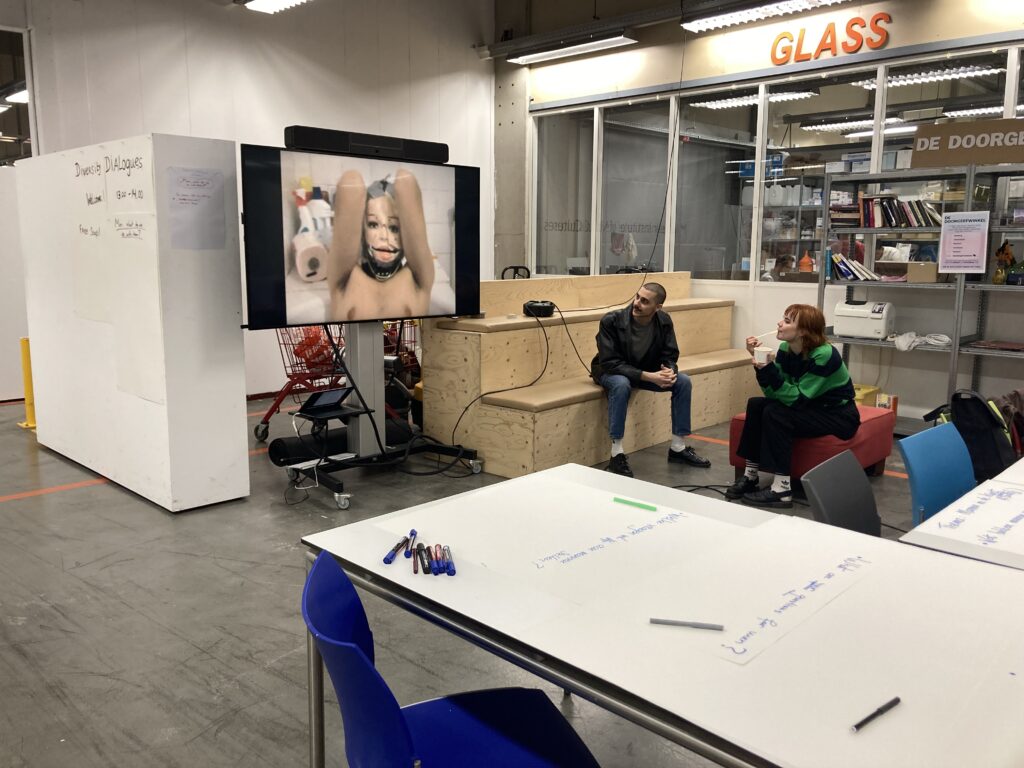
the diversity dialogues lunches are an initiative of diversity dialogues st. joost/ mivc, supported by aci; the aim is to explore stories/ narratives of under-represented groups, or to bring forth topics that need more visibility
for my take on the diversity dialogues, i chose to talk about and present immigrant masclinty, the challanges of redefining toxic standards, and how to deal with navigating different cultures, standards and expectations.
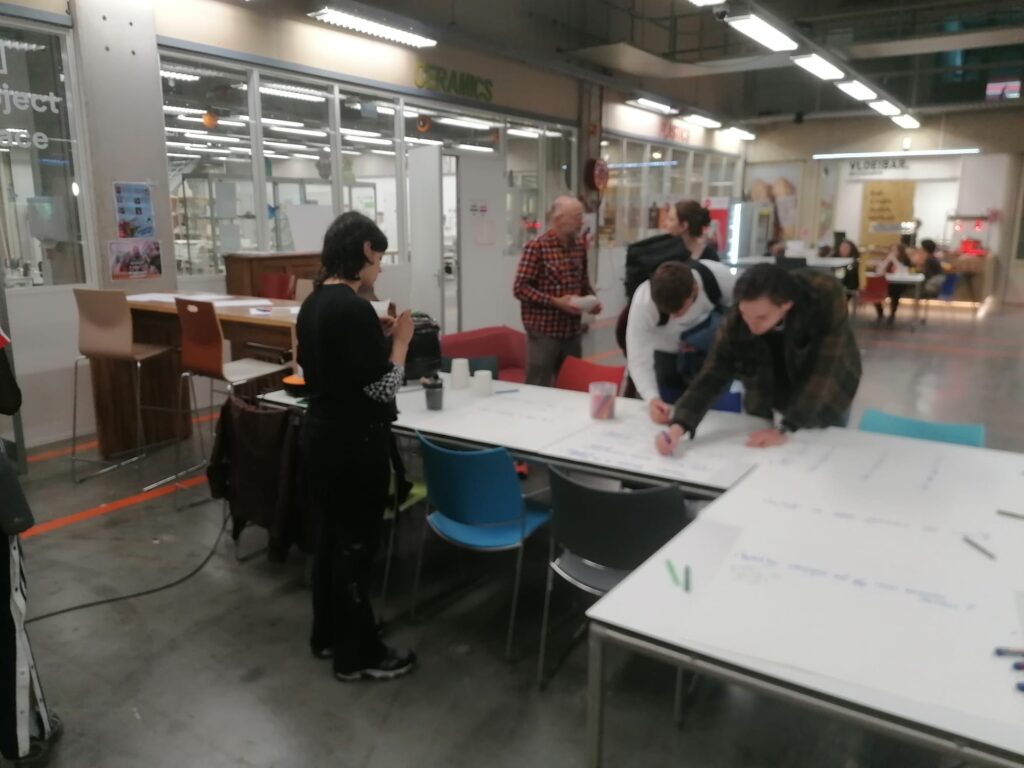
“in my artistic endeavor titled ‘untitled (apartment)’, i aim to delve into the subtleties of a safe space for masculinity. through the portrayal of three distinct characters, each representing various facets of the male experience such as childhood, adulthood, puberty, and the masculine/feminine dichotomy, i invite viewers to explore and interpret the work freely, without any judgment or apprehension.”
i believe in the power of shared experiences, where male and non-male individuals can come together and exchange personal stories, including those seemingly insignificant or irrational fears we may have encountered or overcome. I believe that such simple acts can have a profound impact and foster a sense of connection and understanding.”
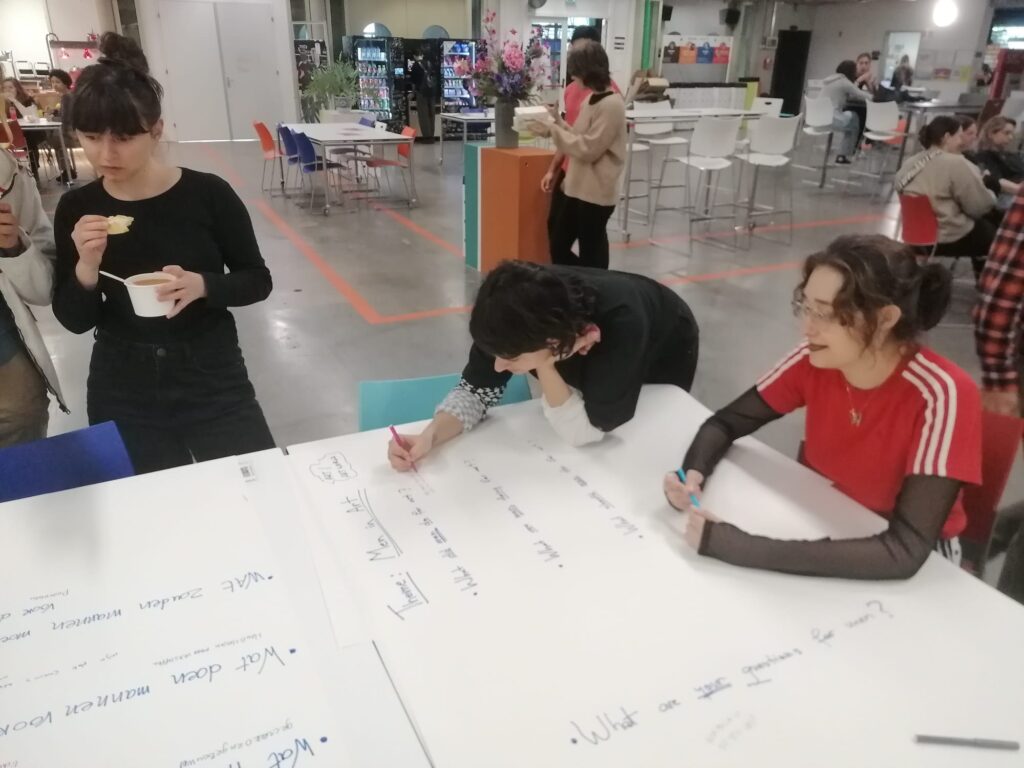
visitors were invited for a screening of my work, untitled(apartment), and were also encouraged to answer questions about the definition, history and role of masculinty in the past, and for the future
mivc st. joost – open studio day – 28.01
link to the instagram page > here <

”the mivc graduating class of 2023 has worked extremely hard to put together this event and hope that you will be able to join us as we open the doors and invite you to experience what we have been working on!
by combining the notion of an open studio and an exhibition we created a curated event where we bring our studio projects into a curated space to hold a public event that propels the discourse around our artistic practice and research
each individual artist or designer was not confined by an overarching theme that may not have resonated with their research. instead, they were encouraged to present the work in a way that suits their practice
for the curation of the event, we have divided the space by pathway.
this show exhibited pieces from the master institute of visual cultures graduating class of 2023’s work in progress as we brought the research out of the studios and into the exhibition space”
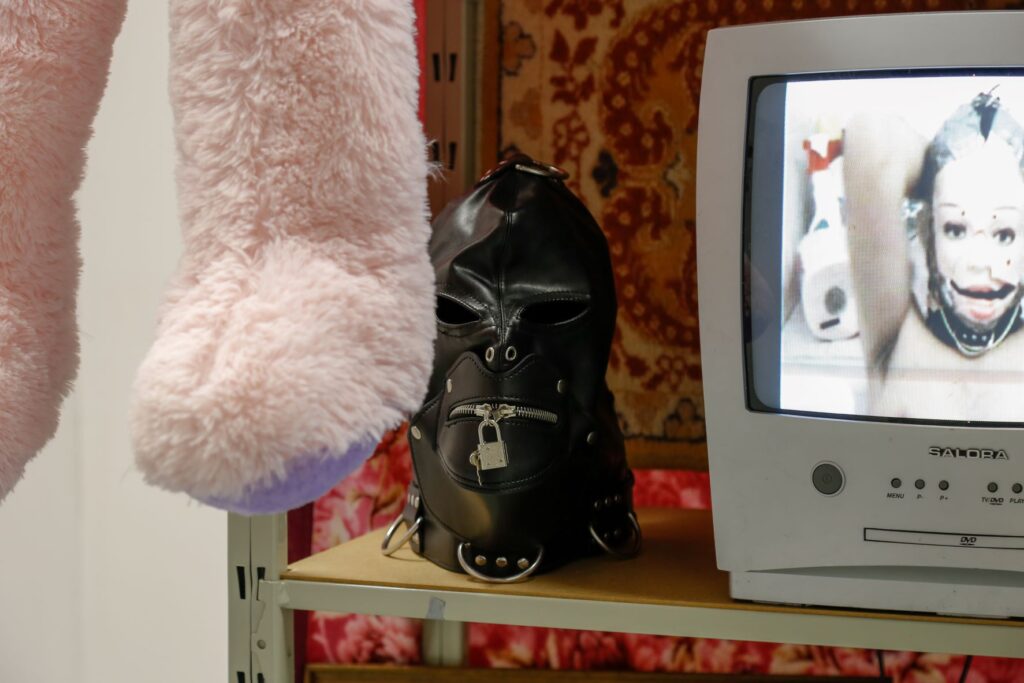
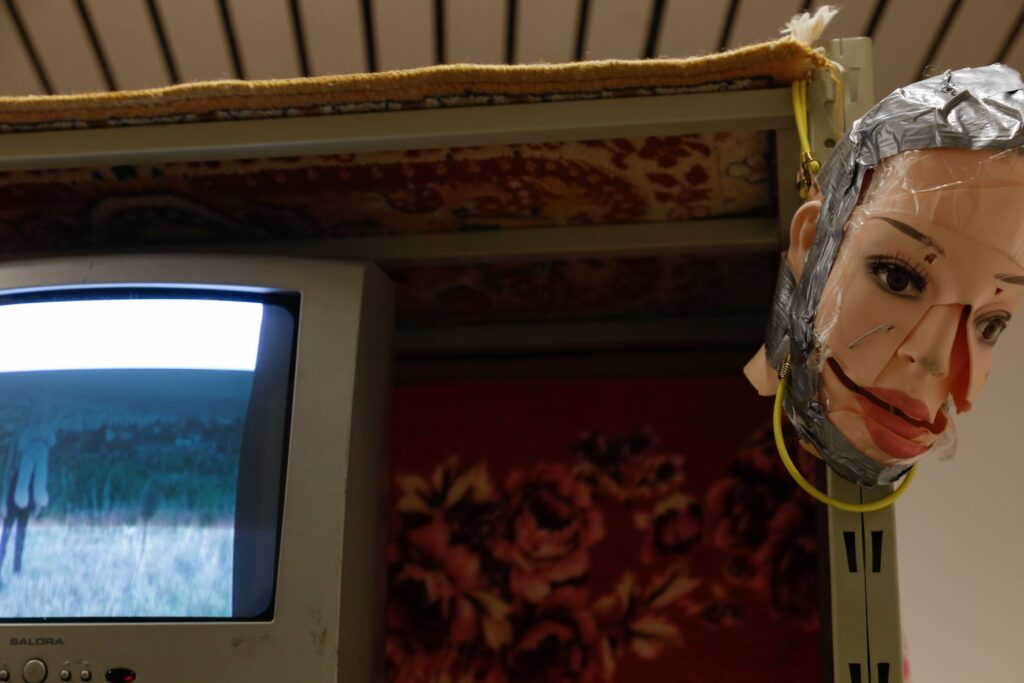
– – my project: – –
”through staged and filmed performances, radu-mihai explores the eastern european masculine identity and speculative male archetypes. he uses as a jumping point his own romanian identity, along with local traditions and subcultures that are directly linked to the male (balkan) condition, in hopes of discovering new ways to embody his new migrant identity.


radu-mihai’s artistic research is focused on creating video art pieces that act as abstract personal journals, in which aspects of romanian and dutch migrant culture are fused together and discussed.
in most of these “video journals”, the focus is put on five unnamed characters that each could be considered a “caricature” of some aspects of migrant life. the narrative is often times somewhat abstract, and the work tends to be very self-referential.”
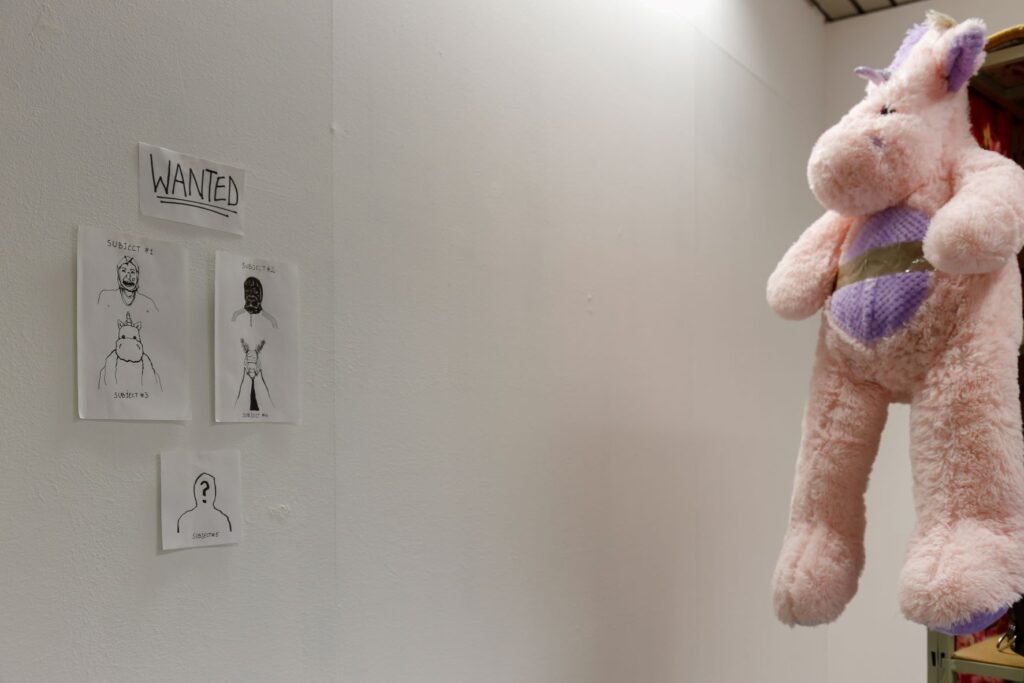
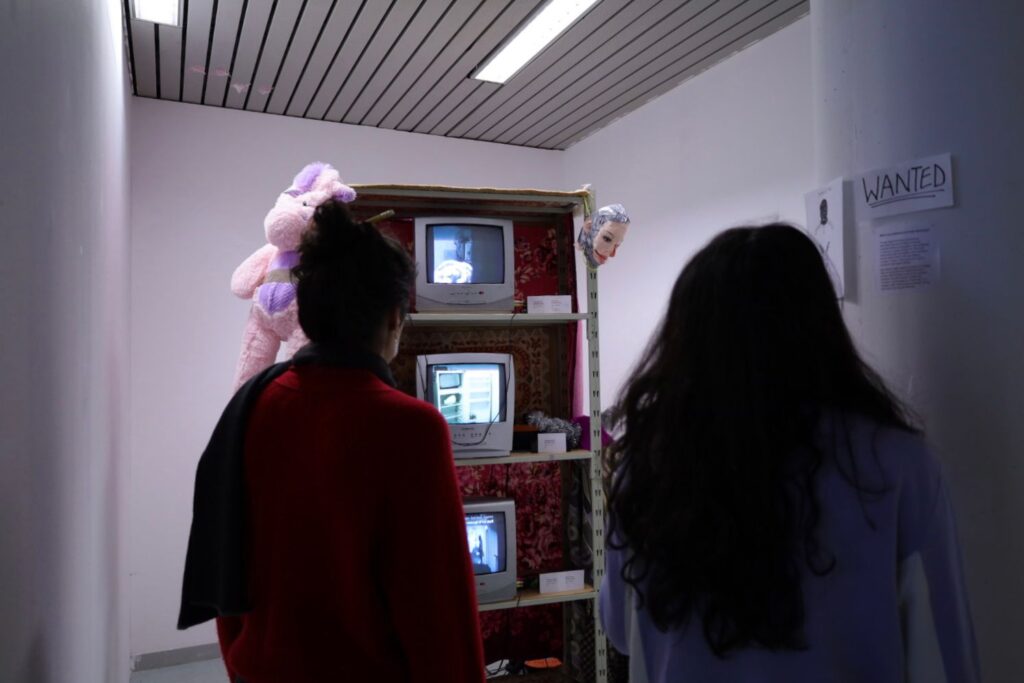
the open studio exhibition was a project i started along with other students as a preparatory step in having our graduation show be exhibited somewhere outside of the university, in a larger, more appropriate space. to prepare for this, in our thrid semester we organized a walk-in open studio, where students were encouraged to share their latest work and thesis research with the broader public.
behind the scenes, alot of meetings were done internally by me; on one side with my fellow visual arts students whom i represented, and on the other, with my other representatives, to make sure proper mediation and coordination was ensured across different departments. the bulk of the work was coming up with and supervising the different work teams that would have been responsible for production, curation, social media etc. this was done through multiple check-in meetings within and throughout the three departments.
in the end, the exhibition was a resounding success and it allowed us to further push the university into providing us with more practical activities and more visibility for the hard work that the students do on a daily basis. we hope that what we accomplished here will continue to be a tradition for the next generations to come.
[ – – – 2022 – – – ]
400 lei / 400 ron – 21.08
a private exhibition/ happening done between 20-21 aug 2022 to protest a lack of affordable and accesible quality galleries for emerging artists from my home city, iași
>>> click here to see the details on the Apartament 6 website <<<
– – – – – – –
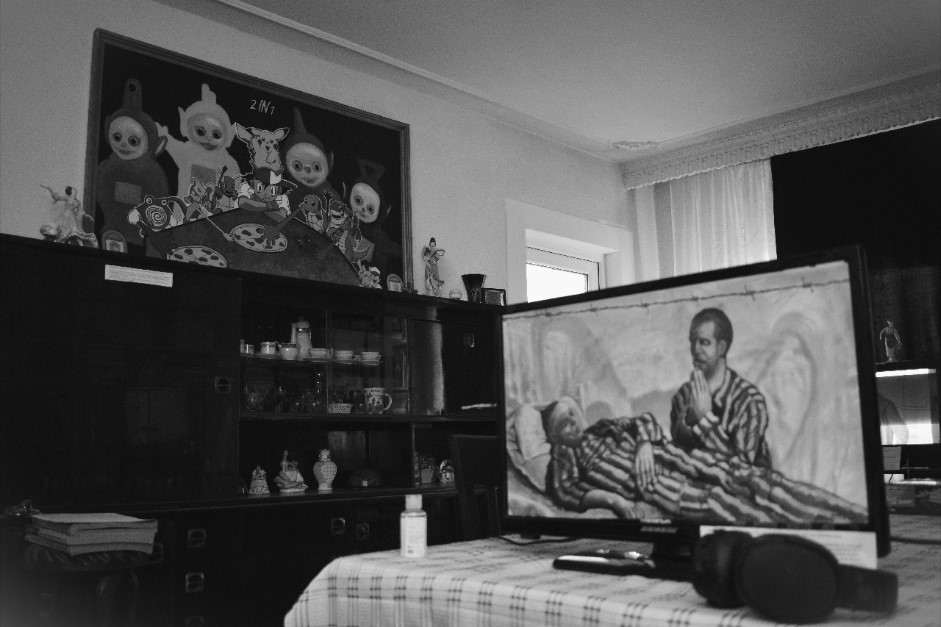
[ – – – 2021 – – – ]
estul sălbatic / the wild east – 23.12 / 10.01
link to the press release > here <
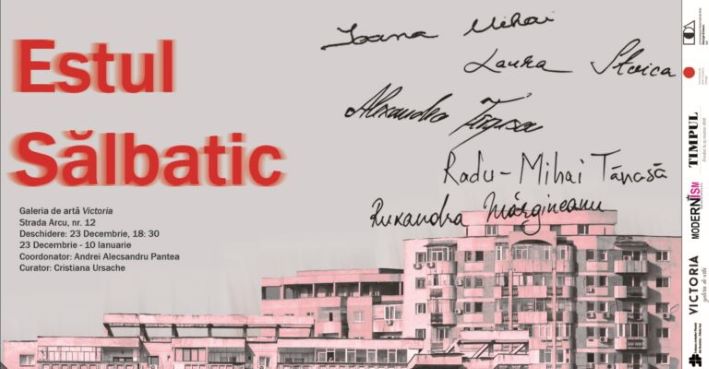
excerpt from the curatorial text:
“estul sălbatic is not just an expression, but really represents the eastern european space; more precisely the romanian space translated through the prism of the experience imprinted on the individual who developed here, as well as the way in which the community around him evolved.
time is also a fundamental element of this exhibition, being in this case about the current moment as well as the recent past, after the 2000s. the artists in this exhibition, being those who belong to the ’99 generation, chose to include in their discourse visually numerous subjects that apparently seem heterogeneous to an objective eye, but which in fact, upon even a superficial analysis, one can notice how these subjects coagulate around the society in which the artists were formed.
by doing so, they create a common discourse, with diverse voices and stories behind it. they create the story of a generation from different perspectives.”
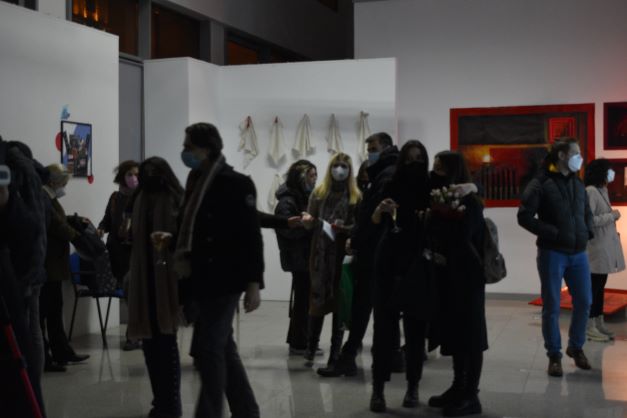

– – my project: – –
for this event, i have decided to exhibit two projections of works i have recently done: figure 1 is my interactive work untitled(C.U.G. I); while figure 2 is the short-film scape(Goat).

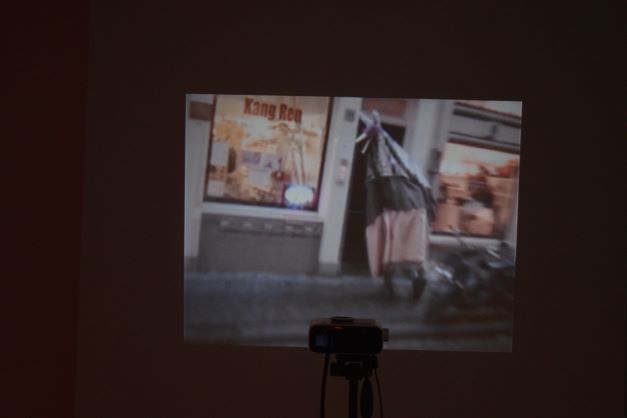
together they present an intimate narrative of what it means to be a kid in the recently eu-approved country of romania. explored here are themes of work migration, early popularization of american alternative media, and especially cultural (or country) dysphoria.
[ – – – 2020 – – – ]
compromis / compromise – 13.01 / 20.01
link to the press release > here <
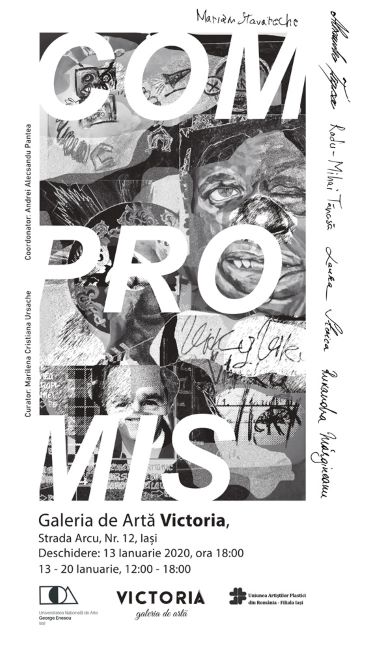
compromis was the first independent exhibition i had the pleasure of contributing to; and it is through this first compromise that our artistic group started taking shape.
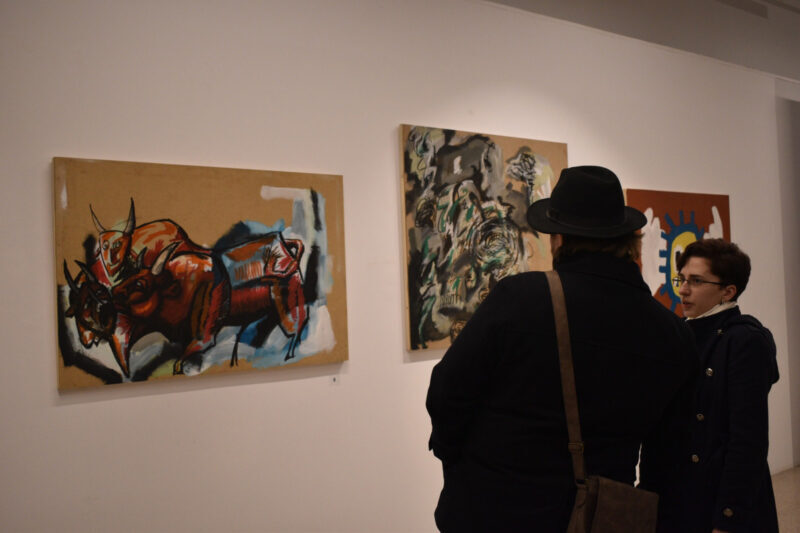
– – my project: – –
part of the exhibition text can be found below:
welcome to the king’s menagerie.
every wealthy king has a menagerie, it is a symbol of power, respect, and a safe choice when it comes to flaunting your wealth.
the menagerie is not only a window into the king’s tastes regarding animals, but also a mirror of the outside world, of the places and territories the king rules over. every exotic animal has its own story to tell, and each one of them has a background that can be analyzed.
after all, every animal is perfectly suited for the habitat it was born into.
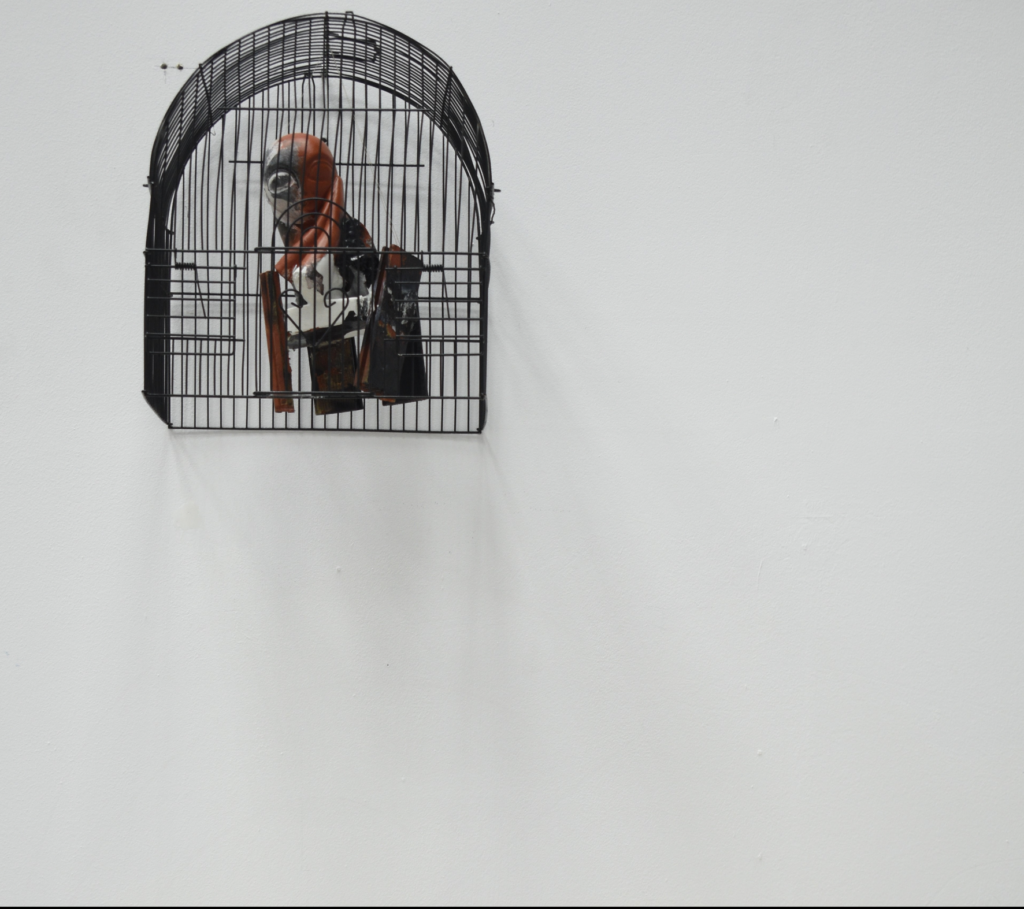
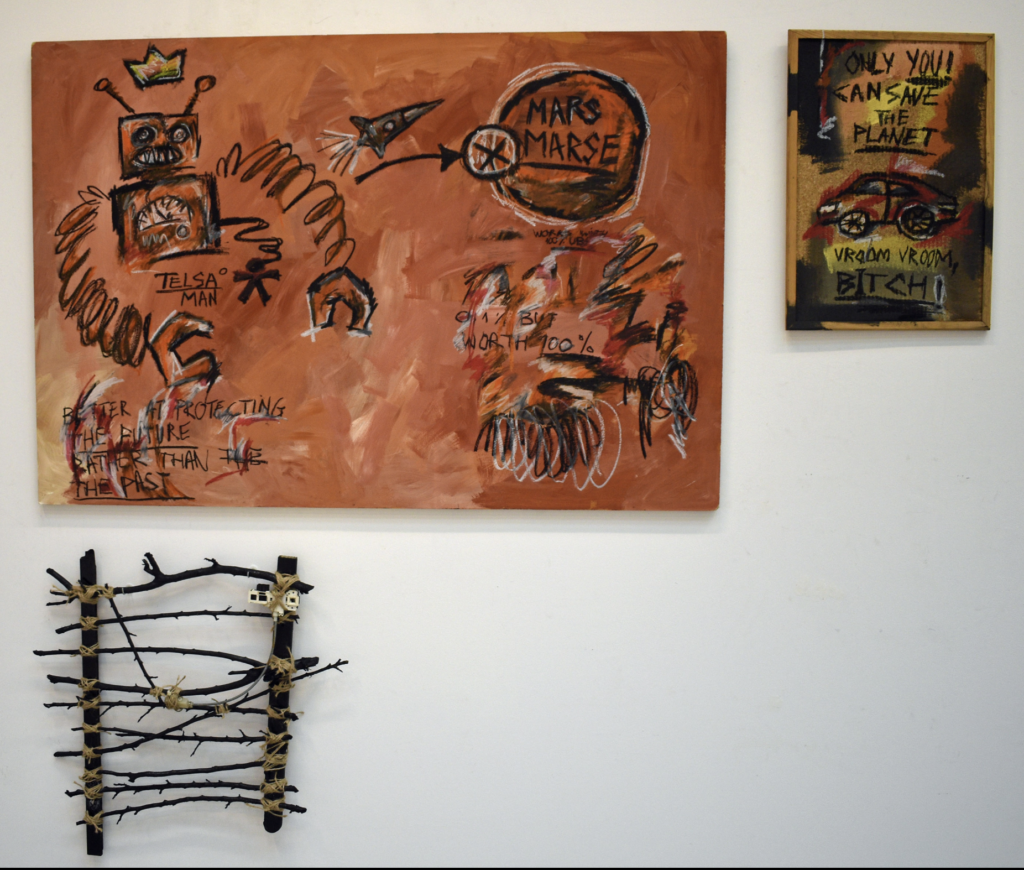
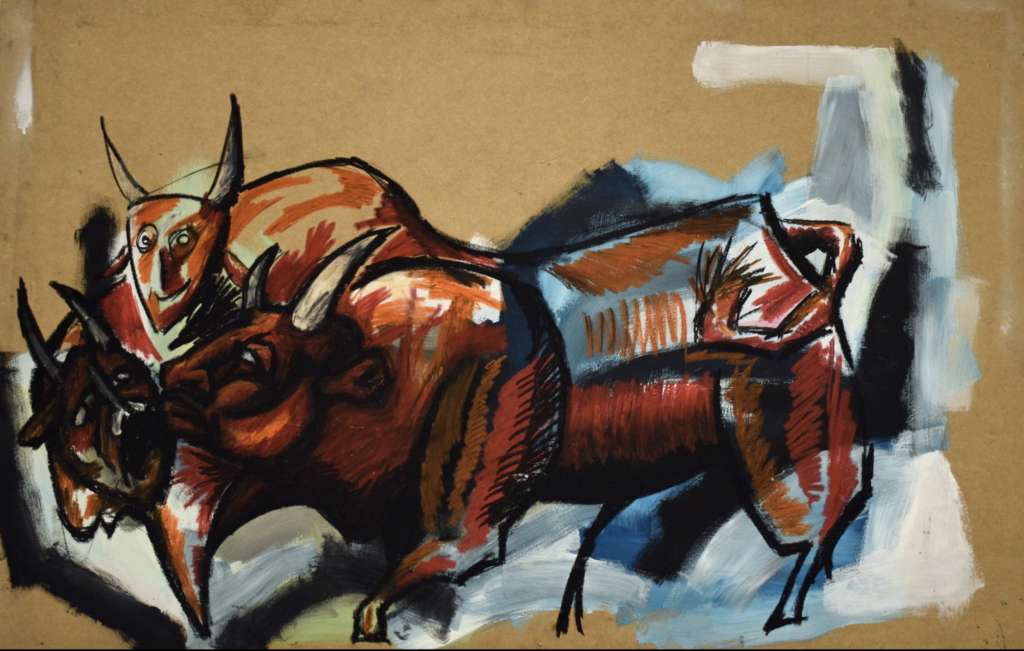

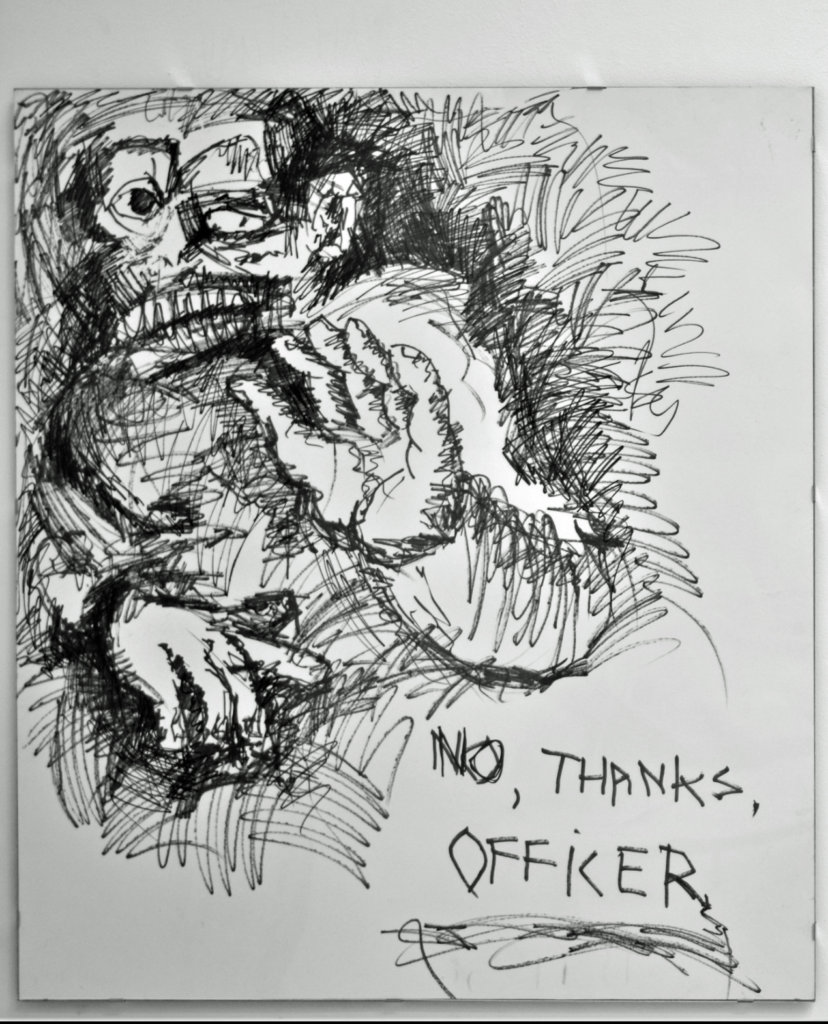
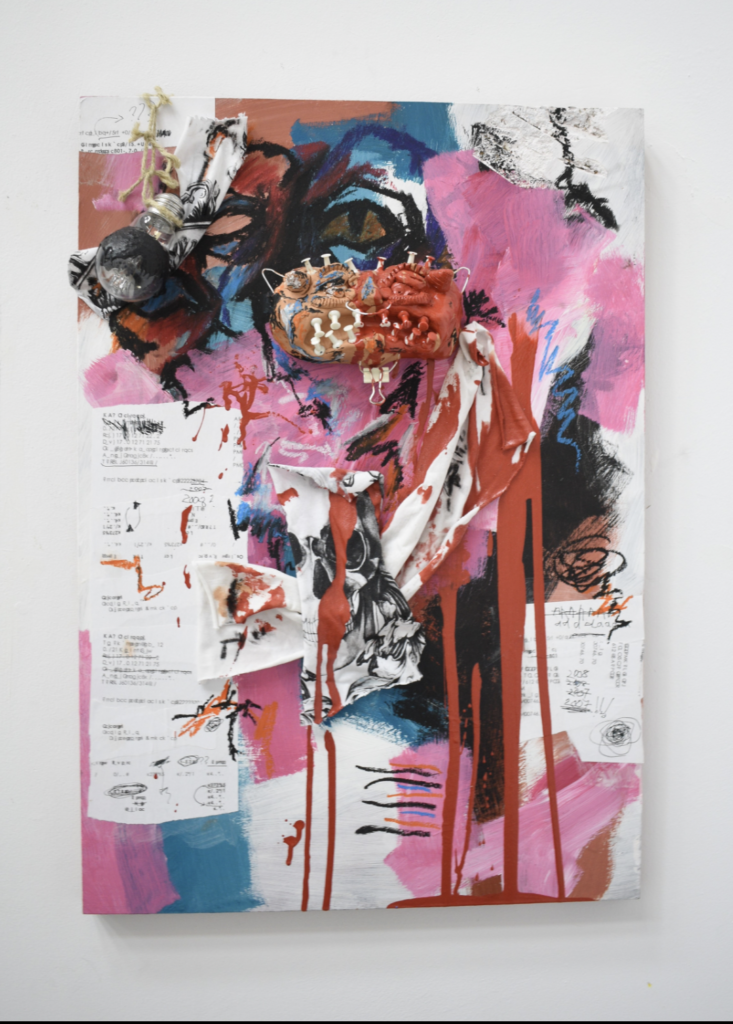
other exhibitions/ screenings/ events where my work was shown:
[ – – – 2025 – – – ]
Salonul Anual de Artă „Artis” 2025 – Arcada Central Art Space; Iași, Romania; with the work „Recovered I”
‘4BIDDEN SOUNDS 4BIDDEN SPACES’ – 4bid Gallery, Amsterdam, The Netherlands; with a live sound work based off „Jonah” by Marin Sorescu
‘BANGS Festival 2025’ – 4bid Gallery, Amsterdam, The Netherlands; with a live performance, dj set and dedicated visuals based off the „What if you embraced your inner stereotype?”
‘My Head is a Mountain / My Hair is Snow’ by Ibrahim Kurt – Het Langhuis, Zwolle, The Netherlands; with a variation of the work „Grandpa’s House”;
One Minutes’ ‘Passing the Love’ by Fehras Publishing – Flutgraben e.V., Berlin, Germany; Remise & NDSM Fuse, Amsterdam, The Netherlands; Zhovten Cinema, Kiev, Ukraine; with a variation of the work „Untitled (Man)”;
„Atelier 35” 2025 – Theodor Pallady Gallery; Iași, Romania; with the work „Recovered I”
BigToilet’s PLOP2 Session – OCCII; Amsterdam, The Netherlands; with a live performance, dj set and dedicated visuals based off the „What if you embraced your inner stereotype?”
[ – – – 2024 – – – ]
ROFFA Film Club’s November Session – WORM; Rotterdam, The Netherlands, live screening of the work „Untitled (Bathroom I)”
INC Zinefest 2024 – OT301; Amsterdam, the Netherlands; with the works: „Full Night (The Best Internet Cafe in Romania)”, „441,2 Lei/ 441,2 RON”, „400 Lei/ 400 RON”, „Visual Journal I (Fairytales for the child within)”
Salonul Anual de Artă „Artis” 2024 – Arcada Central Art Space; Iași, Romania; with the work „Untitled (Status Quo)”
Spread Zinefest 2024 – Het Resort; Groningen, the Netherlands; with the works: „Full Night (The Best Internet Cafe in Romania)”, „400 Lei/ 400 RON”, „Visual Journal I (Fairytales for the child within)”
Ivano-Frankisvk International 4:3 Short Film Festival’s ‘Will There Be A Place For Us In This Frame’ – Kino-Theater Lumier; Ivano-Frankisvk, Ukraine; with the work „Untitled (Death)”
_In_The_Mountain’s ‘Pitch Hiking’ – De Besturing, den Haag, the Netherlands; with a live performance, dj set and dedicated visuals based off the „What if you embraced your inner stereotype?”
Fanzineist Vienna Art Book & Zine Fair 2024 – Online exhibition based in Vienna, Austria; with the work „Visual Journal I (Fairytales for the child within)”
„Atelier 35” 2024 – Arcada Central Art Space; Iași, Romania; with the work „Cynocephalis II”
TheWrongBiennale & 60Seconds’ ‘Color your dreams in 60 seconds’ – Fotografisk Center; Copenhagen, Denmark, live exhibition & online screening; with an exclusive work „Page of a Dream Journal”
[ – – – 2023 – – – ]
Radio ALHARA’s ‘Sonic Protest’ Broadcast – Online radio programma & protest; with an exclusive „Untitled” song
TheWrongBiennale’s ‘Continuous Interlude’ – Online screening & exhibition; with the work „PET MARIO”
Towards a Shared Vision | Young Romanian Artists in European Contemporary Art 2023 – Centrul de Interes Cluj, România; with the work „Untitled (Apartment)”
DUTCH DESIGN WEEK 2023 | Class of ’23 / Avenue of Fresh Perspectives – Klokgebouw Eindhoven, the Netherlands; with the series „What if you embraced your inner stereotype?”
Rubezh & NOW Foundation’s ‘NO W’ Pop-up Gallery – Tblisi, Georgia; with the work „(scape)Goat”
Balkan Can Kino: 6th BCK Film Symposium – Athens, Greece; with the work „(scape)Goat”
60 Seconds Festival’s ‘Color Your Dreams’ – Skabelonloftet Refshaleøen, Copenhagen; with the work „Page of a Dream Journal”
DIPLOMA 2023 – Combinatul Fondul Plastic, Bucharest, Romania; with the series „What if you embraced your inner stereotype?”
Émigré Art RUBEZH: LIBERTY – Bishkek, Kyrgyzstan; with the work „(scape)Goat”
First-Time Filmmaker Sessions August 2023 – Online screening, Vimeo On-Demand; with the work „Untitled (Apartment)”
Salwa & W139’s Internet Cafe – W139, Amsterdam, the Netherlands; with a live performance with the Goat costume + Audio-Video piece & an artist talk with Riad Salameh, Zhanna Assaad, Senakirfa and Inkeri Virtanen
Kinemastik International Short Film Festival’s ‘Neck of the Woods’ – Garden of Rest, Floriana, Malta; with the work „(scape)Goat”
One Minutes’ ‘Carnival of Ancestors’ by Ghetto Biennale – Ghetto Biennale, Haiti & Rozenstraat, Amsterdam, the Netherlands; with a variation of the work „Untitled (Man)” and a live performance with the Goat costume + sound piece
40weekend’s Micropop Culture – kanaal40, Amsterdam, the Netherlands; with the work „Untitled (Death)”
International Bad Video Art Festival – Club Dissident – The Dissident Club, Paris, France; with the work „Untitled (My Boy)”
International Bad Video Art Festival – Tbilisi, Georgia; with the work „Untitled (My Boy)”
One Minutes at the International Short Film Festival Oberhausen – Oberhausen, Germany; with a variation of the work „scape(Goat)”
ART SAFARI – Young Blood 2.0 – Dacia-România Palace, Bucharest, Romania; with the work „Untiled (Apartment)”
[ – – – 2022 – – – ]
„Upfront!” Young European Video Awards – Filmwerkstatt Duesseldorf, Germany; with the work „(scape)Goat”
Eye Research Labs – „Time Out Of Joint” – EYE Museum Amsterdam, the Netherlands; with the work „(scape)Goat”
[ – – – 2021 – – – ]
International Printmaking Biennale, Chișinău, 6th Edition – Chișinău, Republic of Moldova; with the work: „Izolare”
„FRESH 2021| ALEXANDRU- ŞTEFAN RĂDUȚĂ & RADU-MIHAI TANASĂ” – Elite Art Gallery; Bucharest, Romania; with the project „S.inful A.mused R.ed S.elf”
[ – – – 2020 – – – ]
„Stări ale corpului / Vârste ale spiritului” – N. Tonitza Gallery; Iași, Romania
„Timp trecut/ Timp prezent – Ediția a II-a” – on-line University group exhibition & publication; Iași, Romania
[ – – – 2019 – – – ]
„Însemne” – curator: dr. Maria Bilașevschi; Iași, Romania
International Printmaking Biennale, Chișinău, 5th Edition – Chișinău, Republic of Moldova; with the work: „We know clean don’t last”
– end of transmission –
